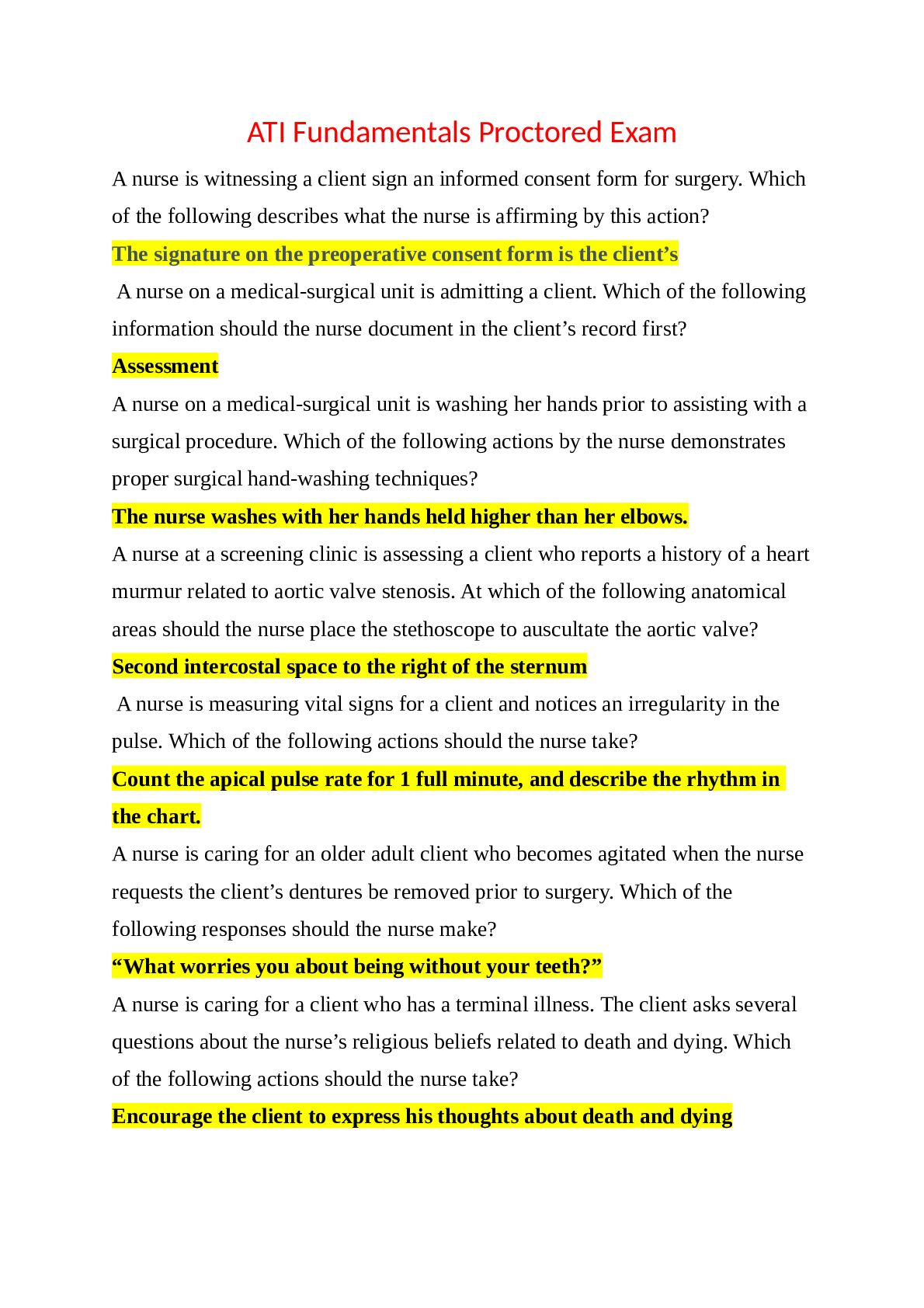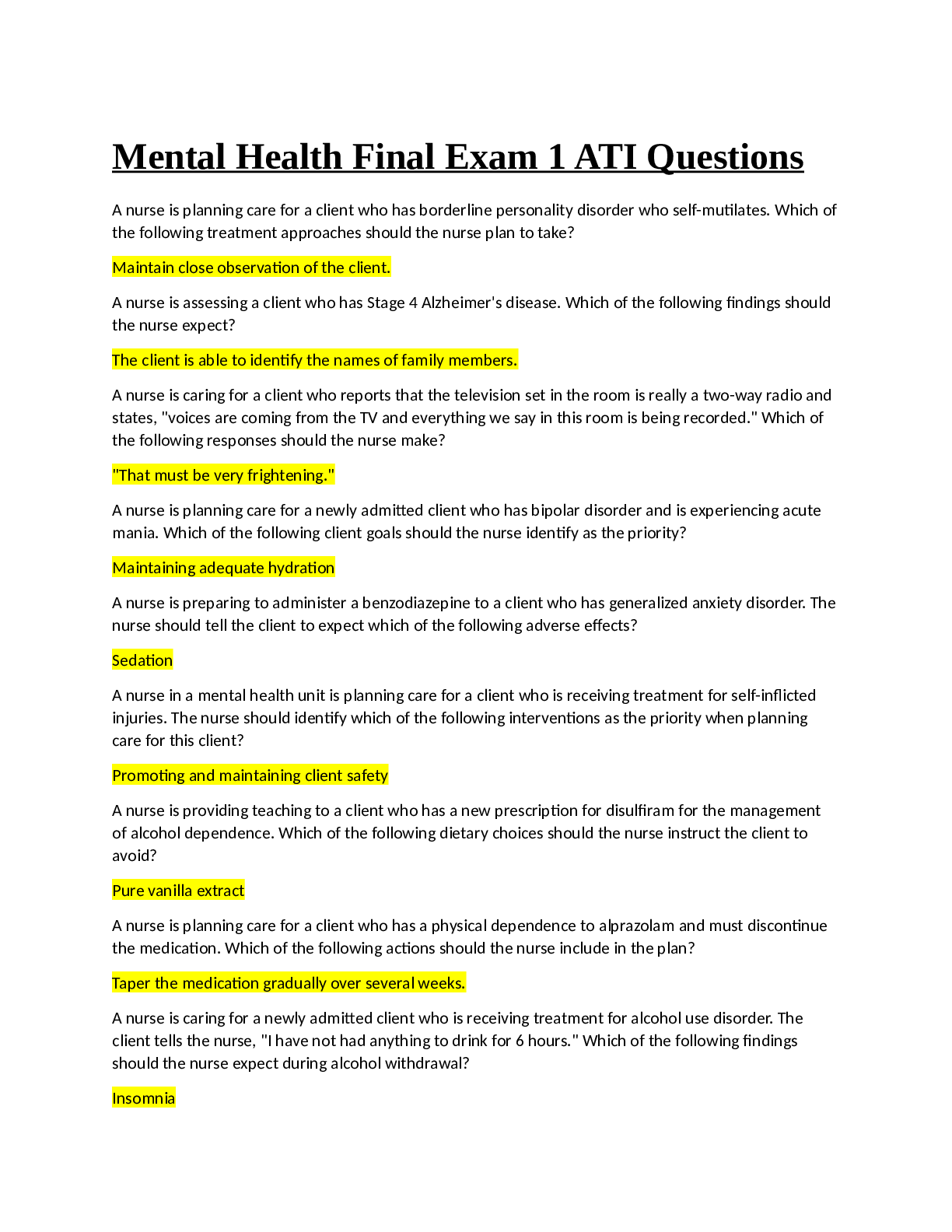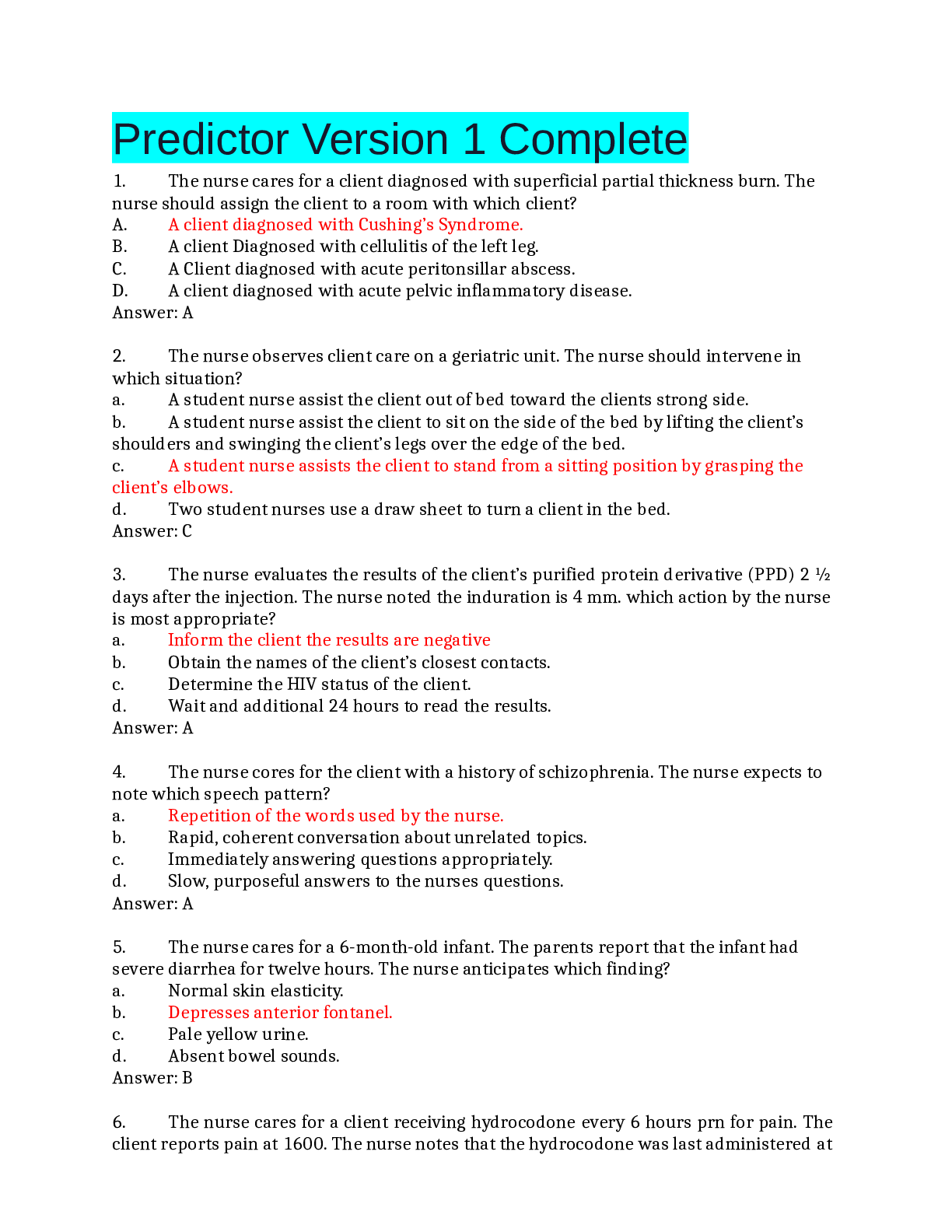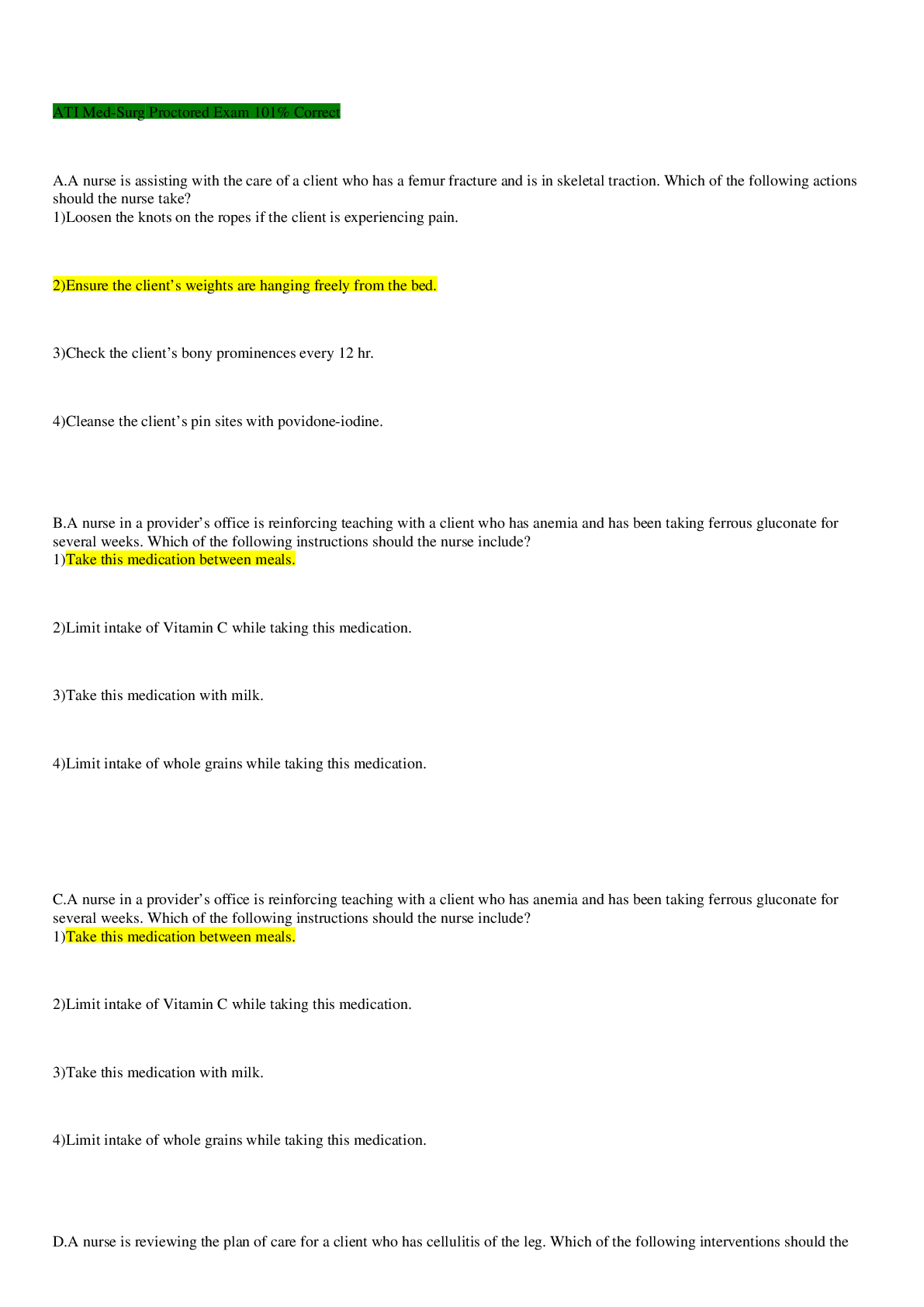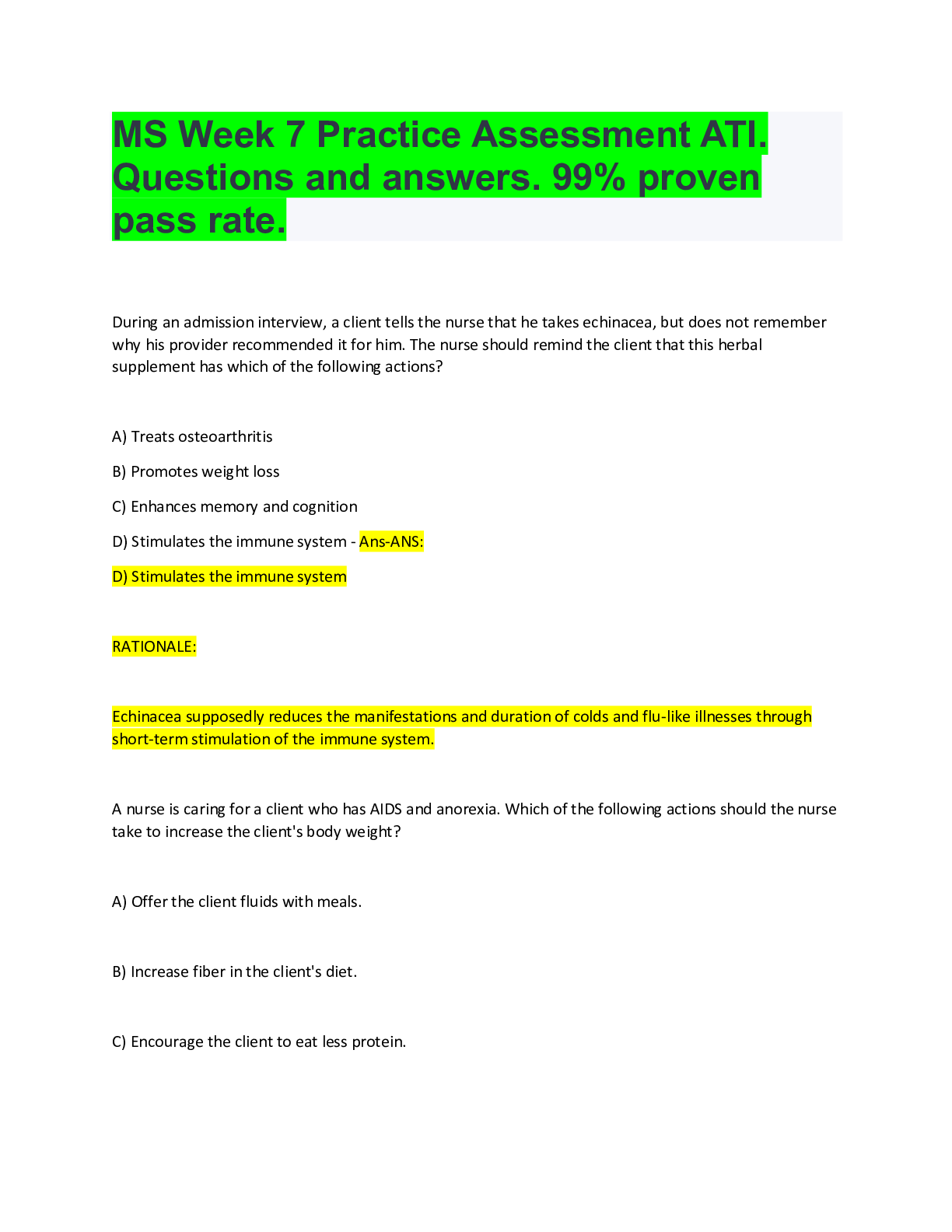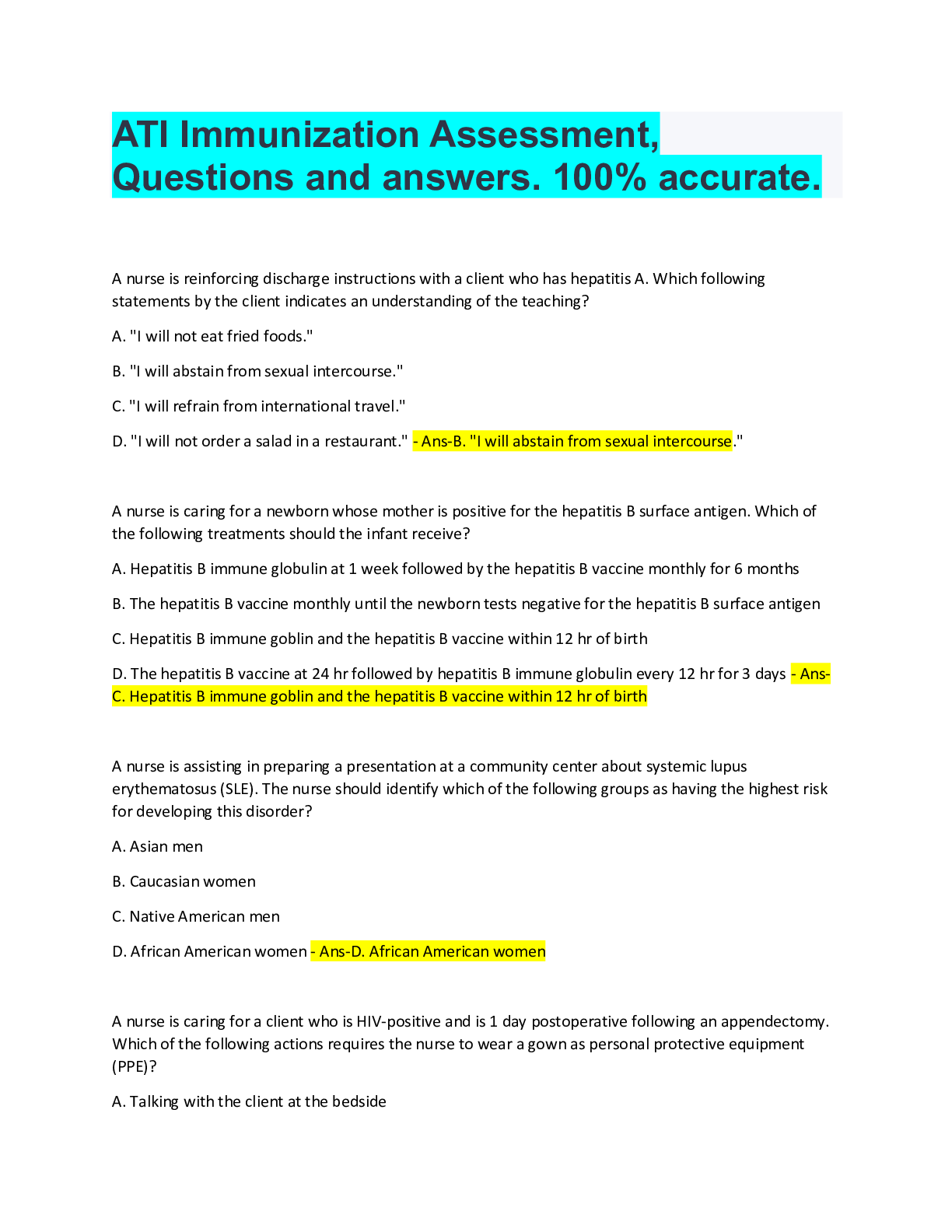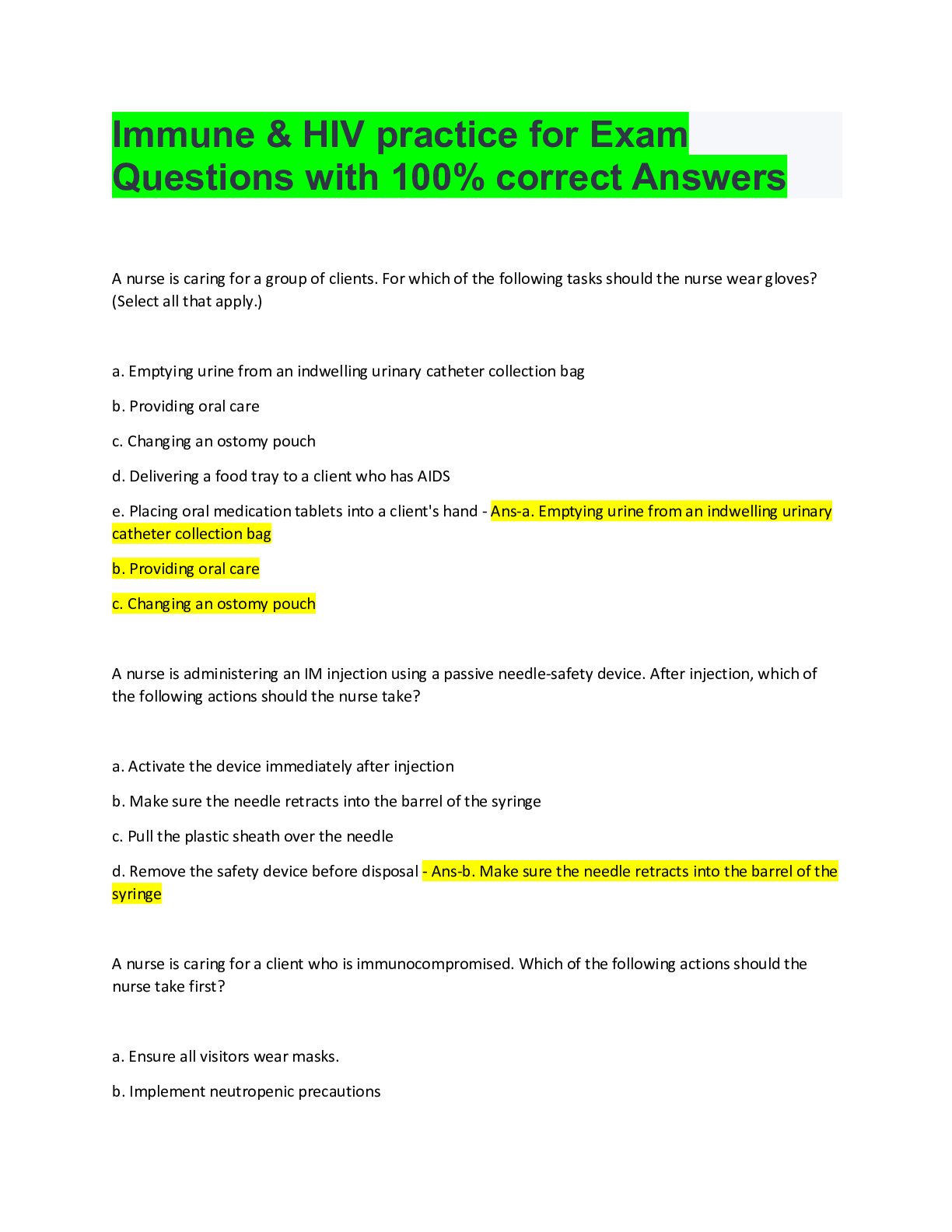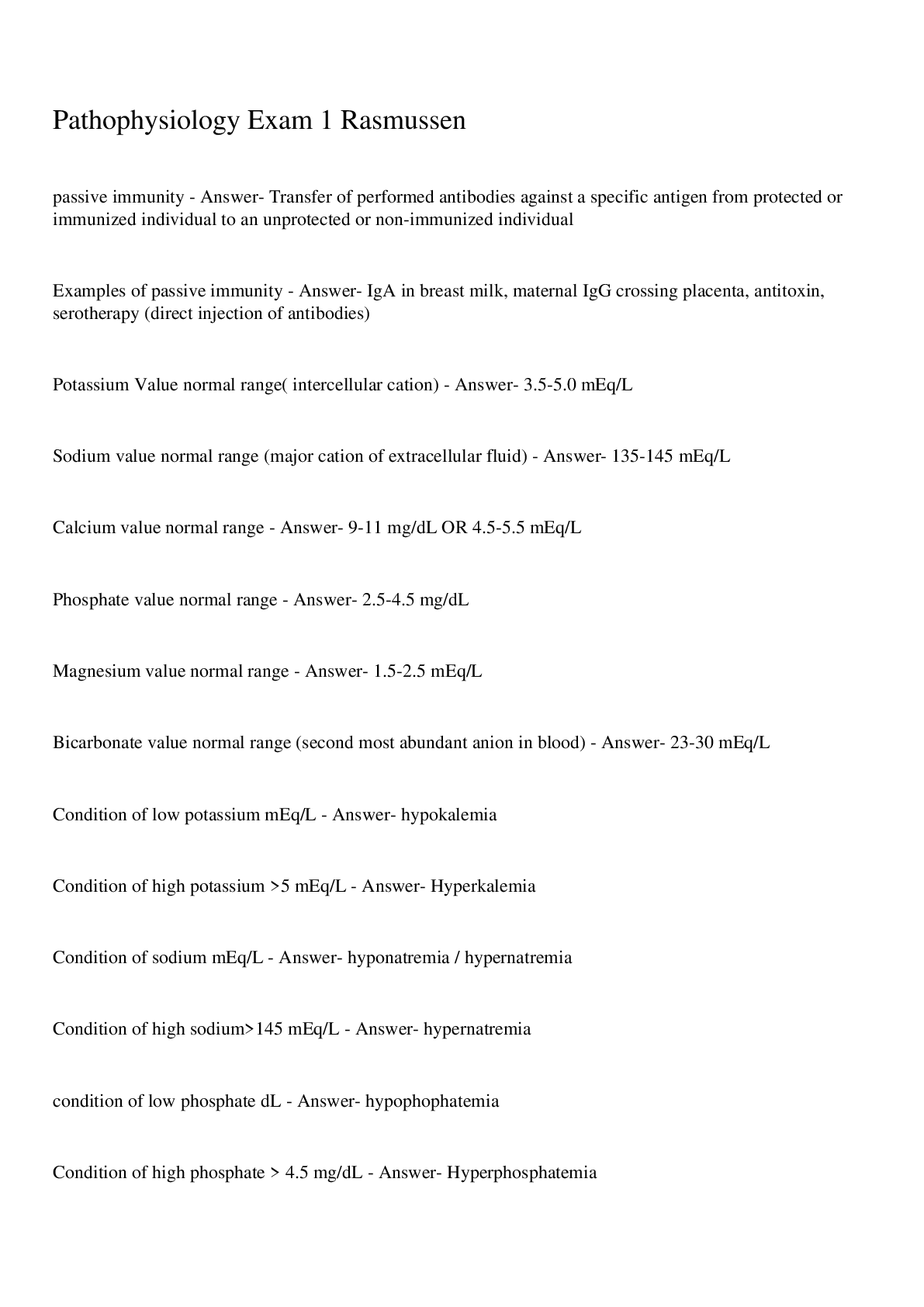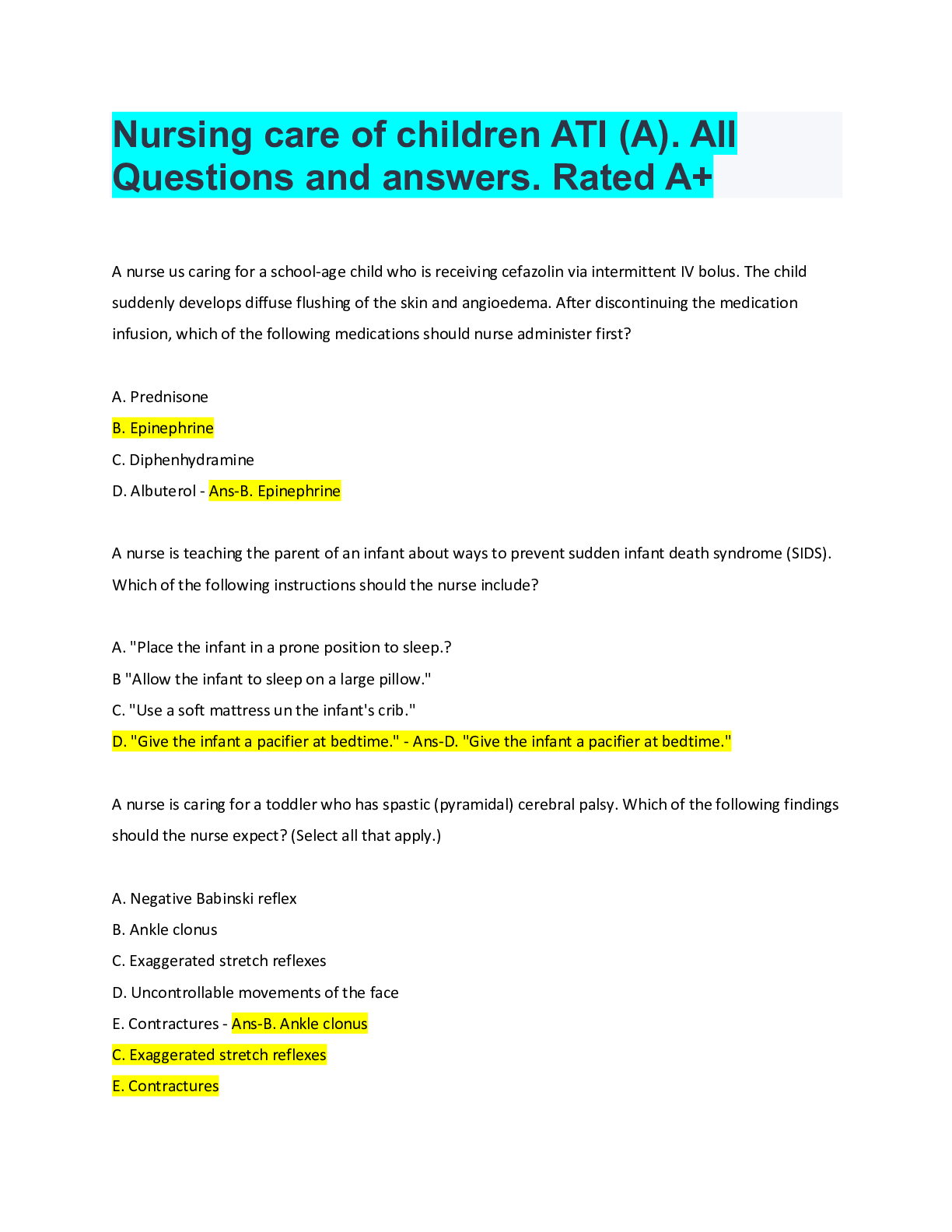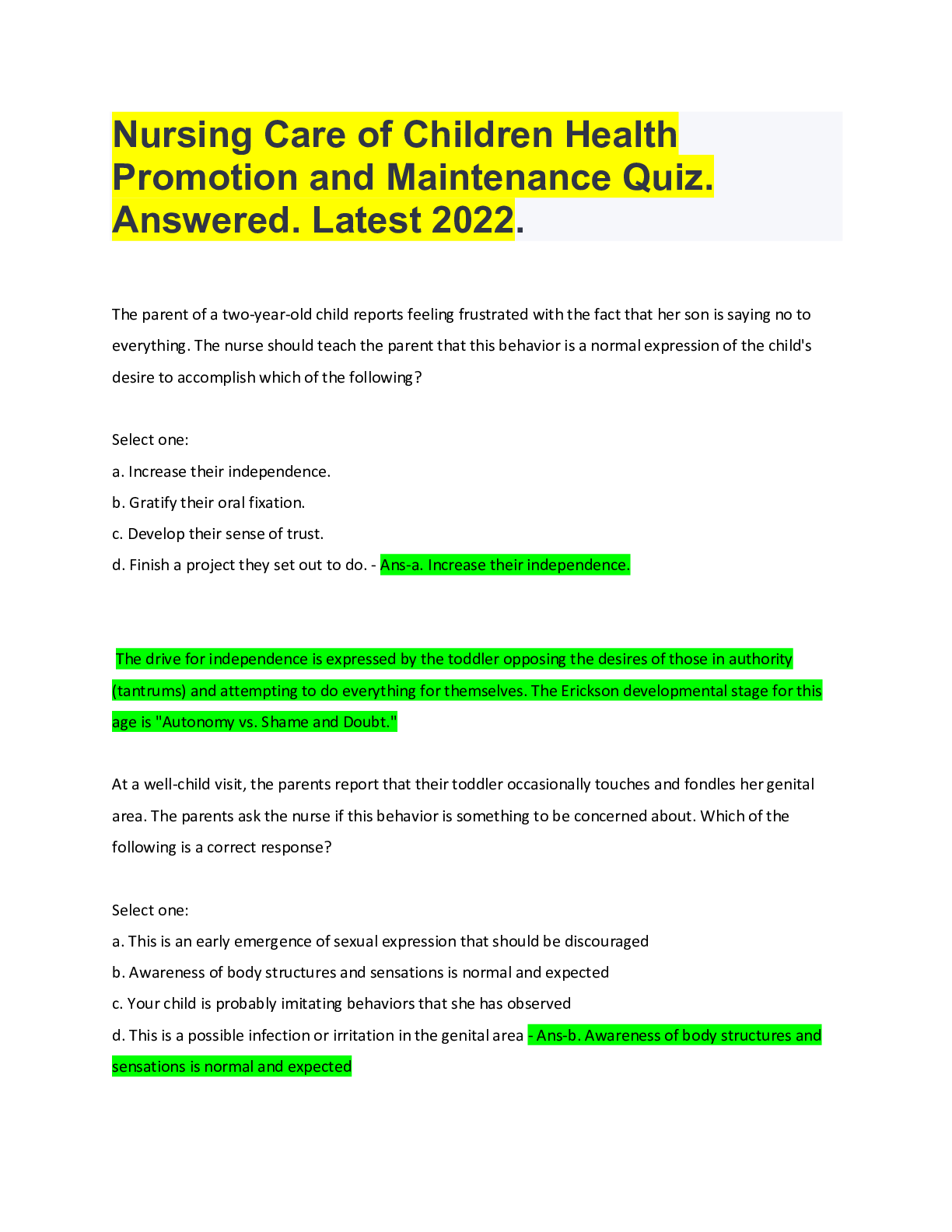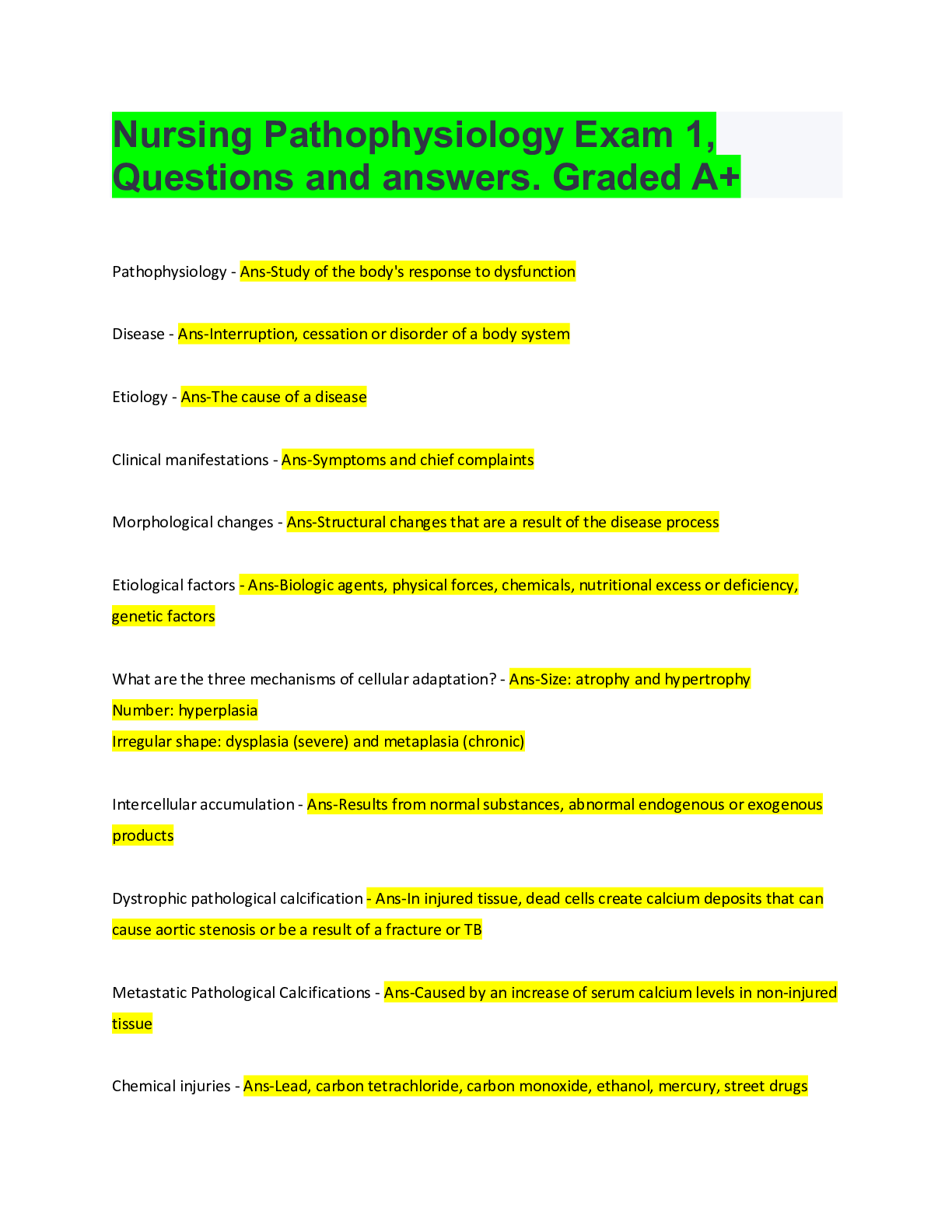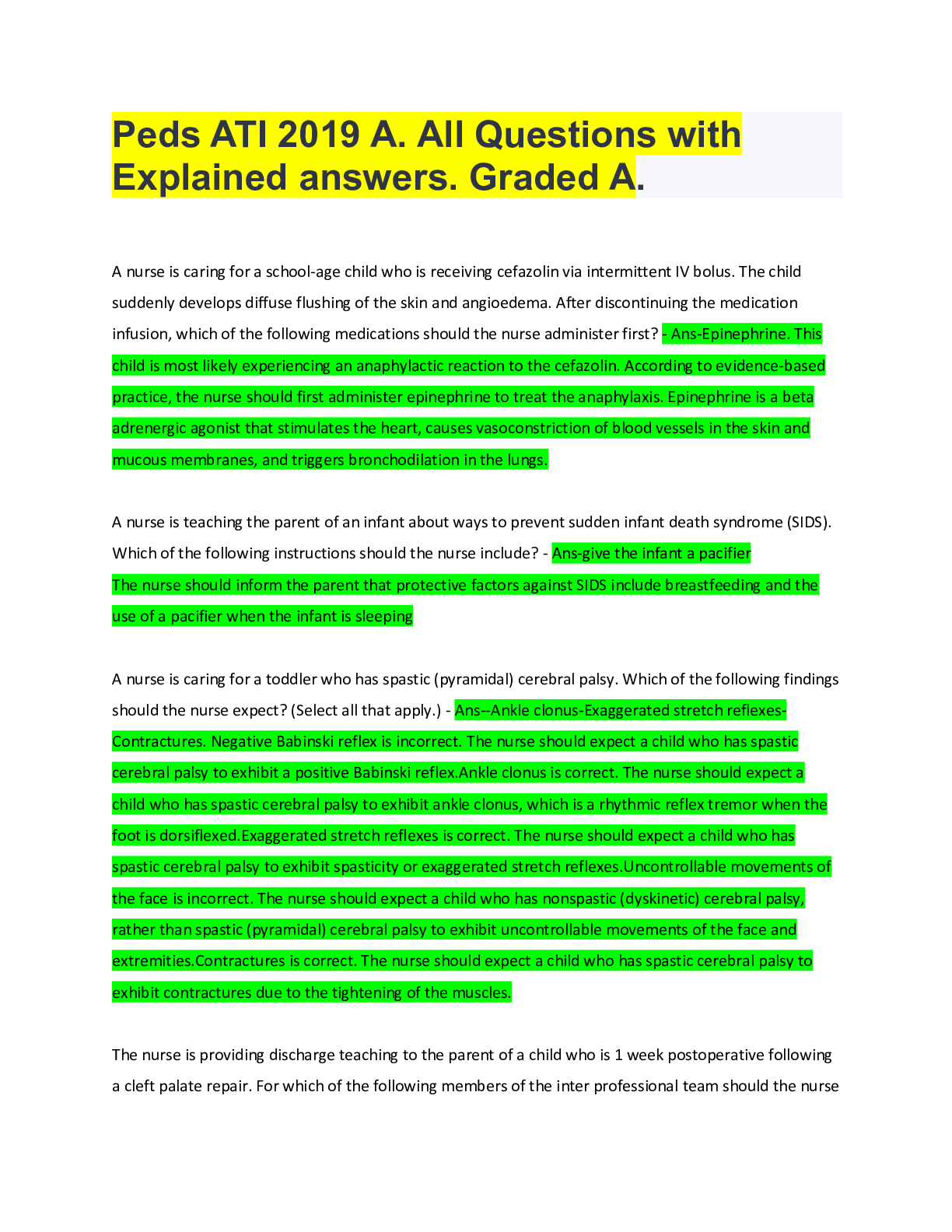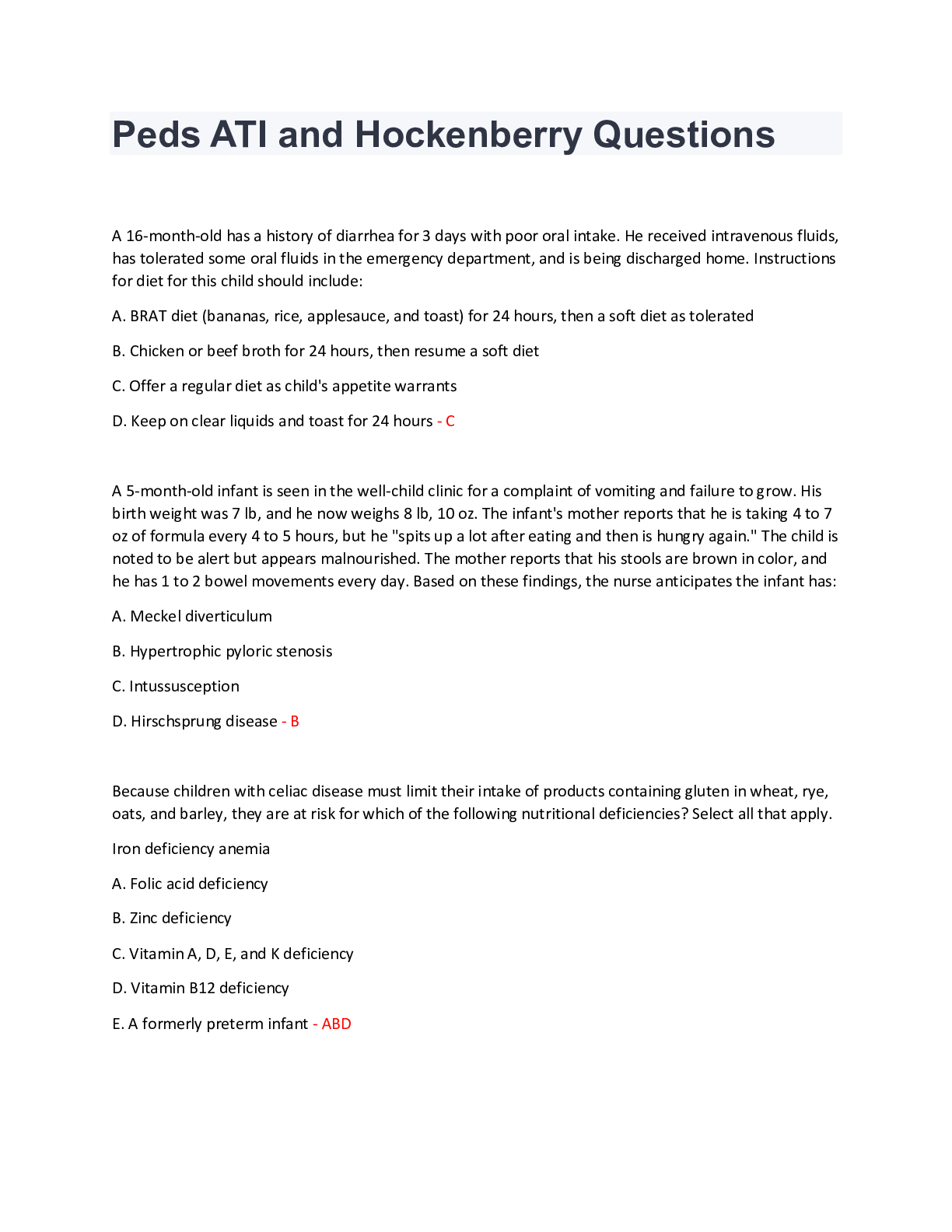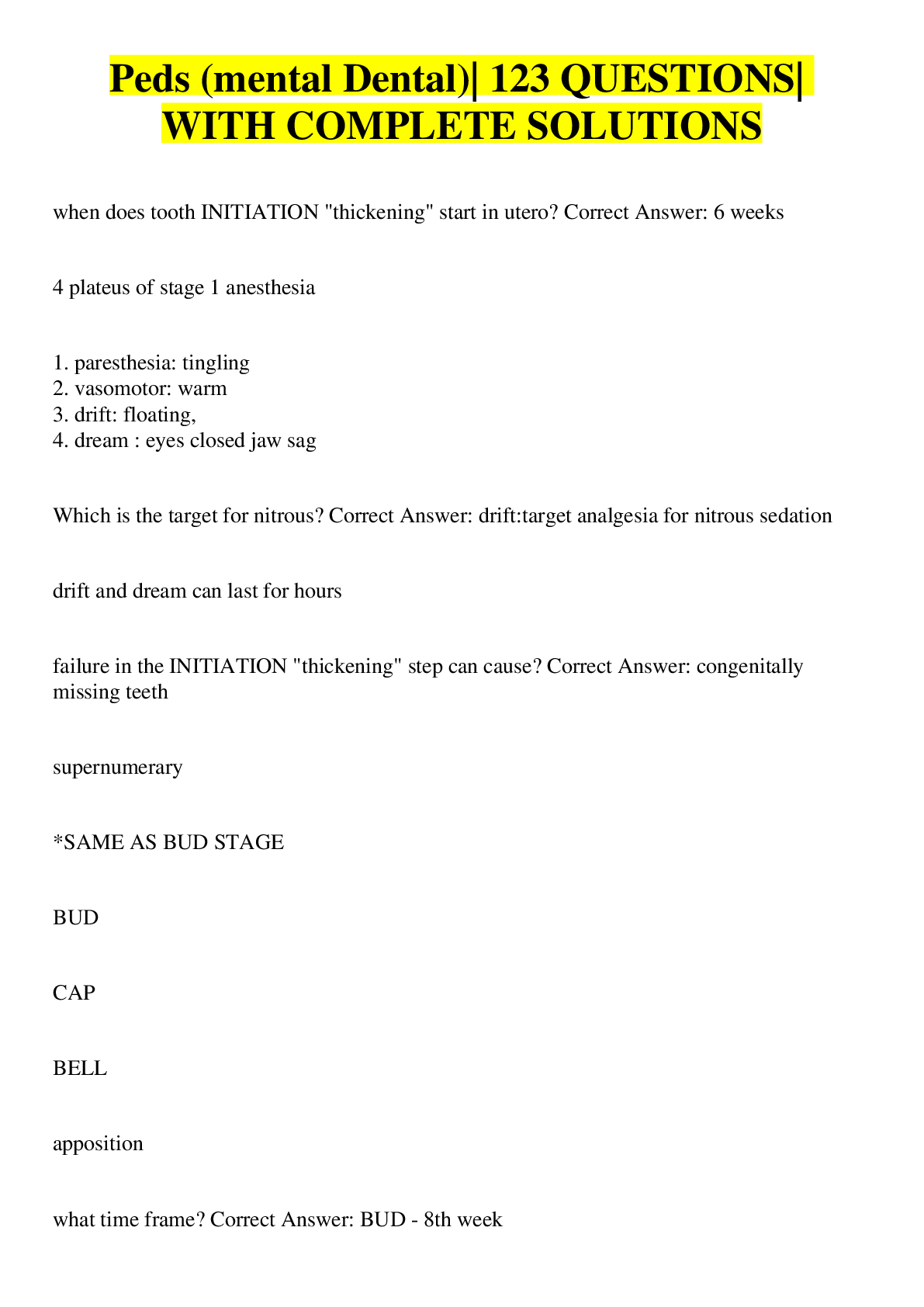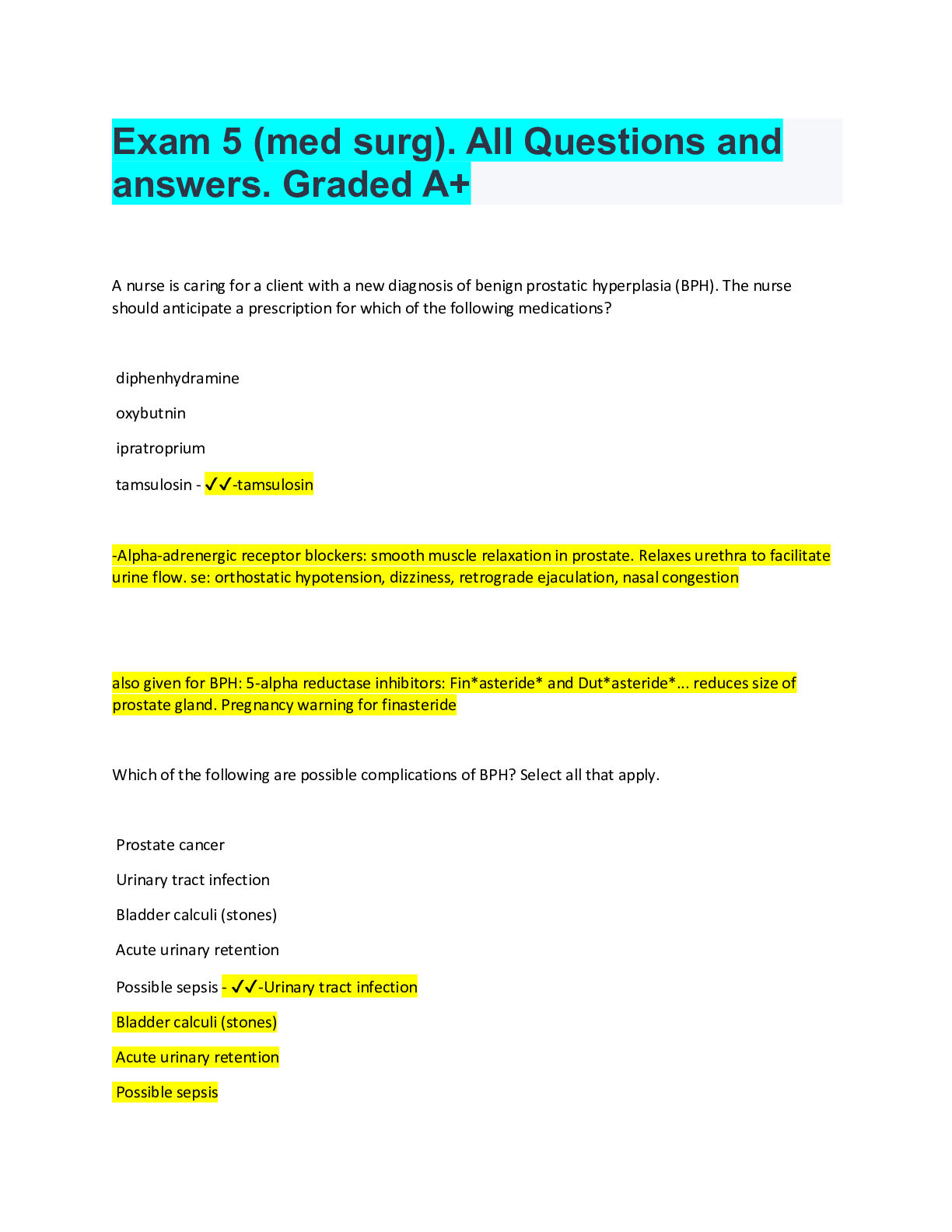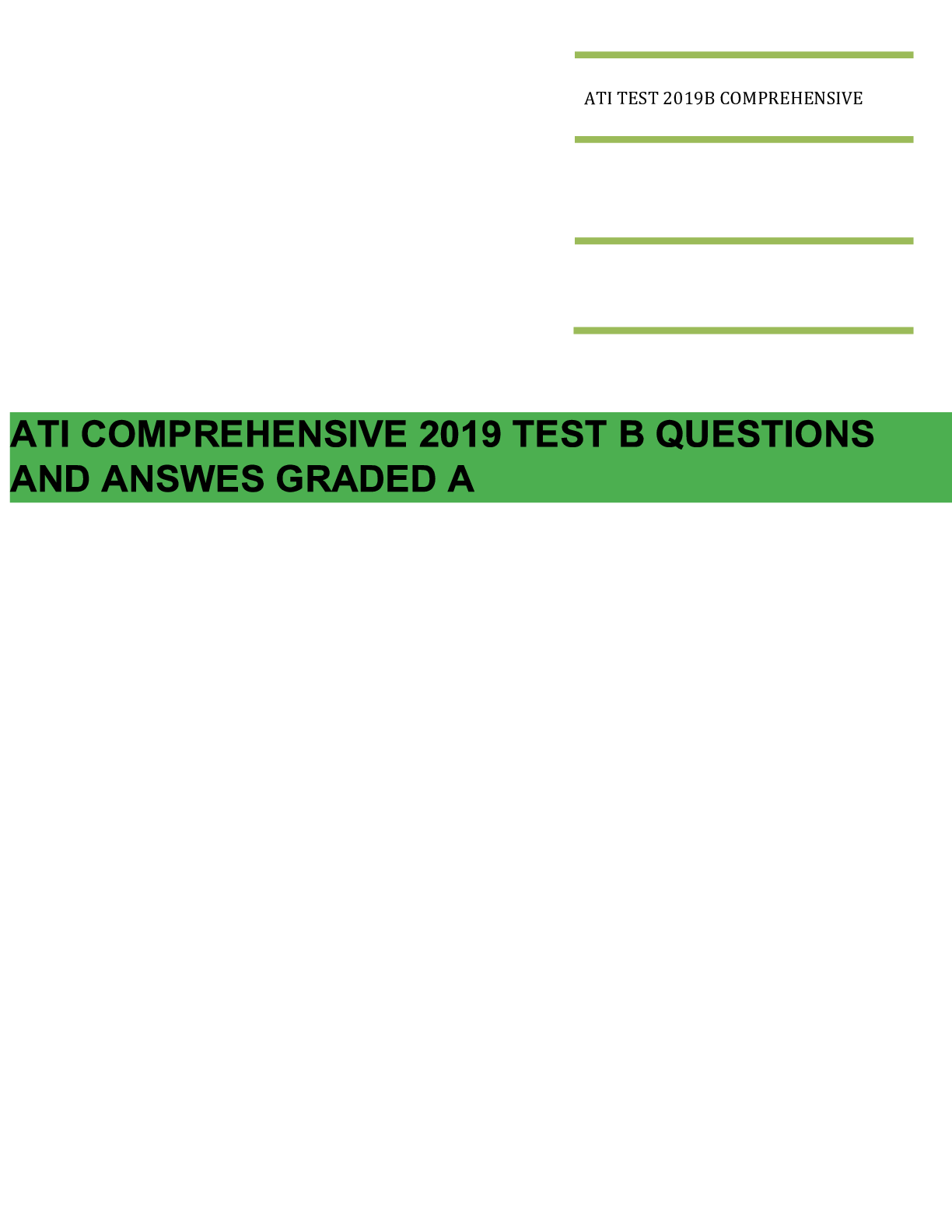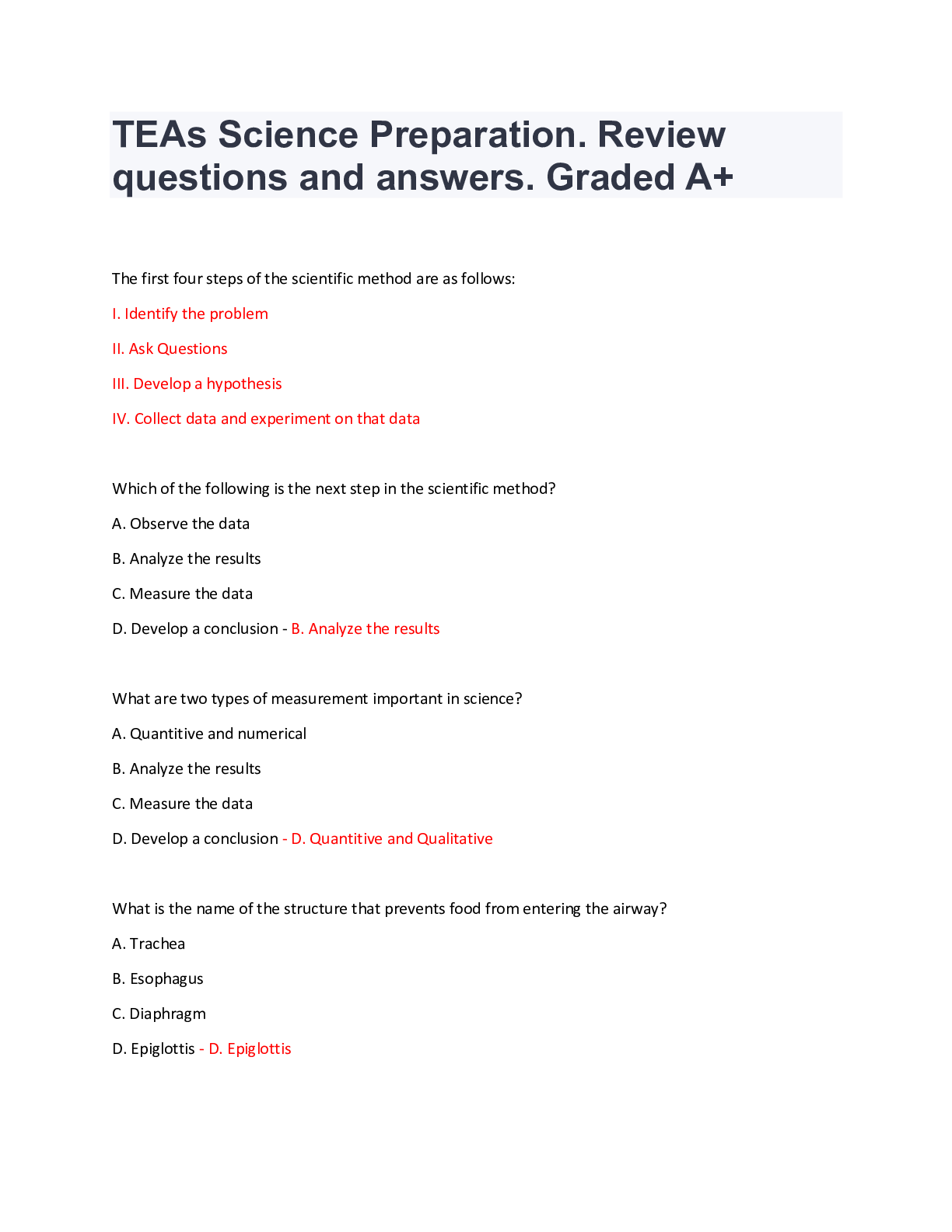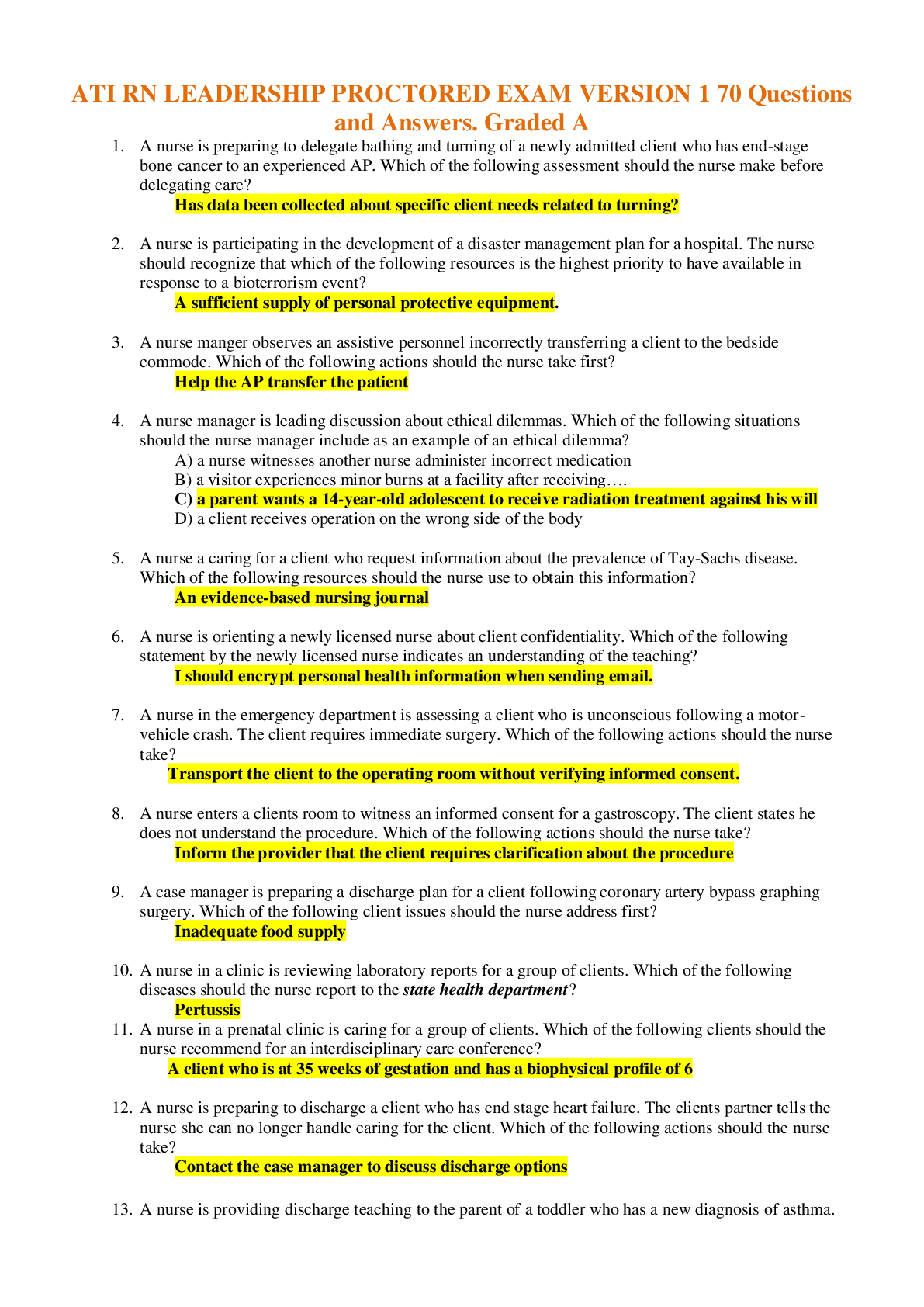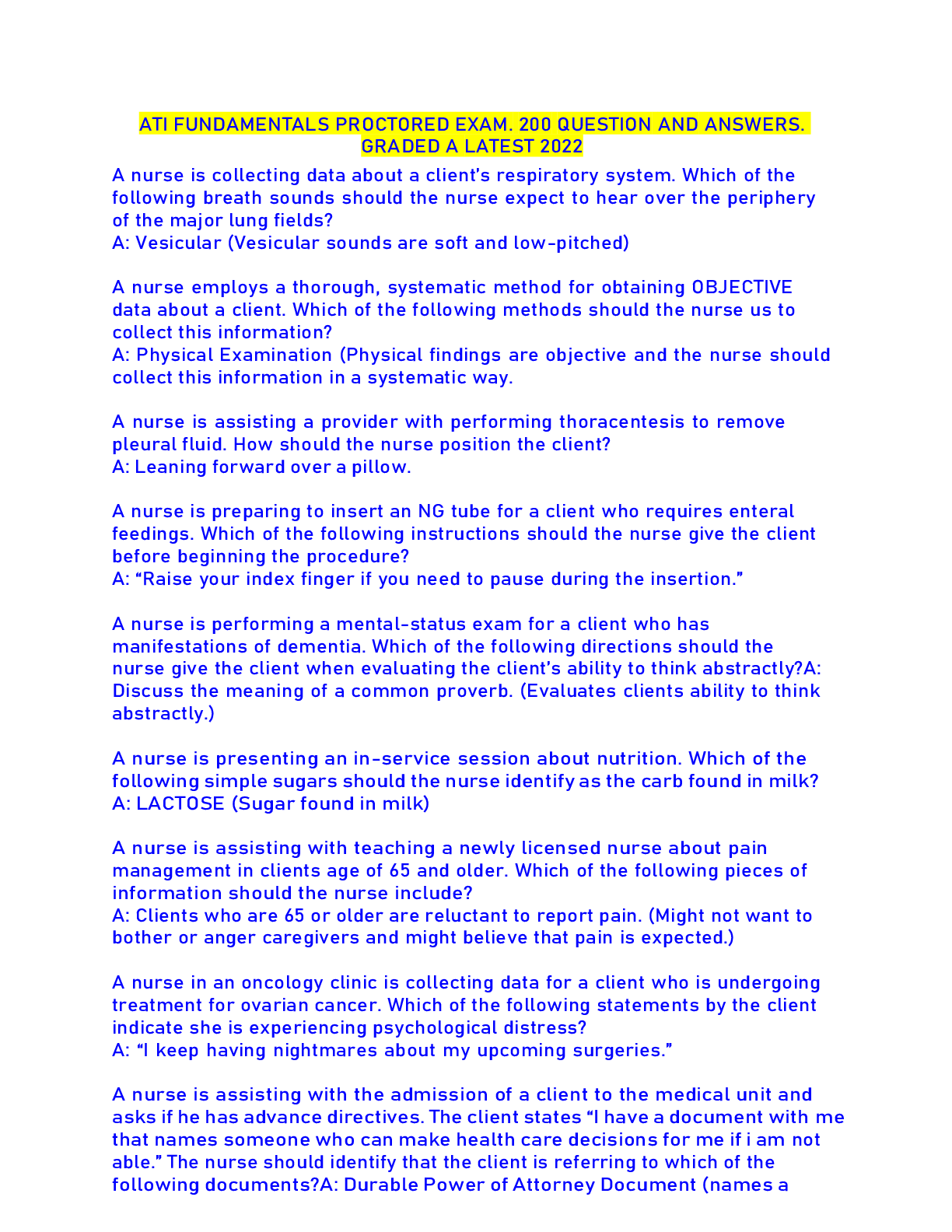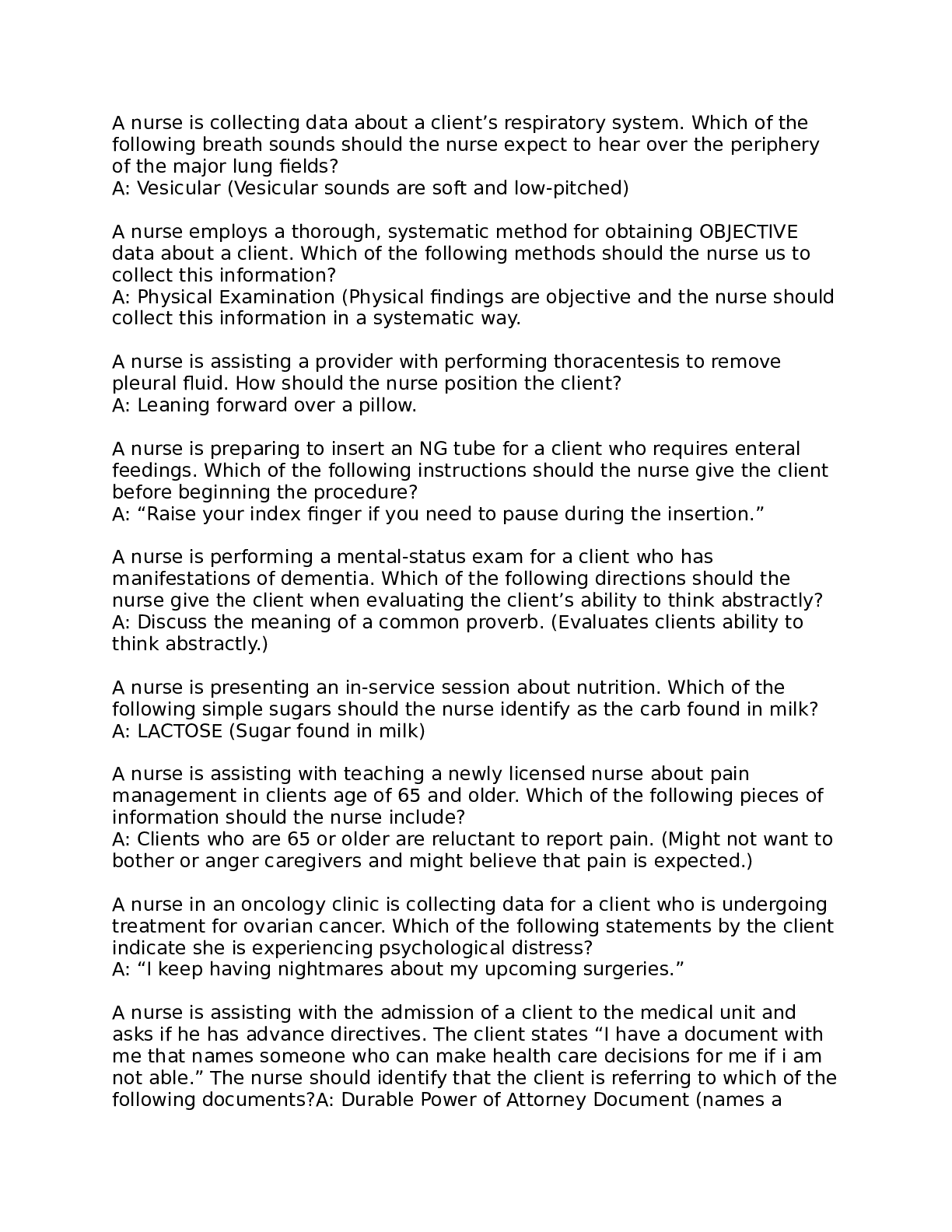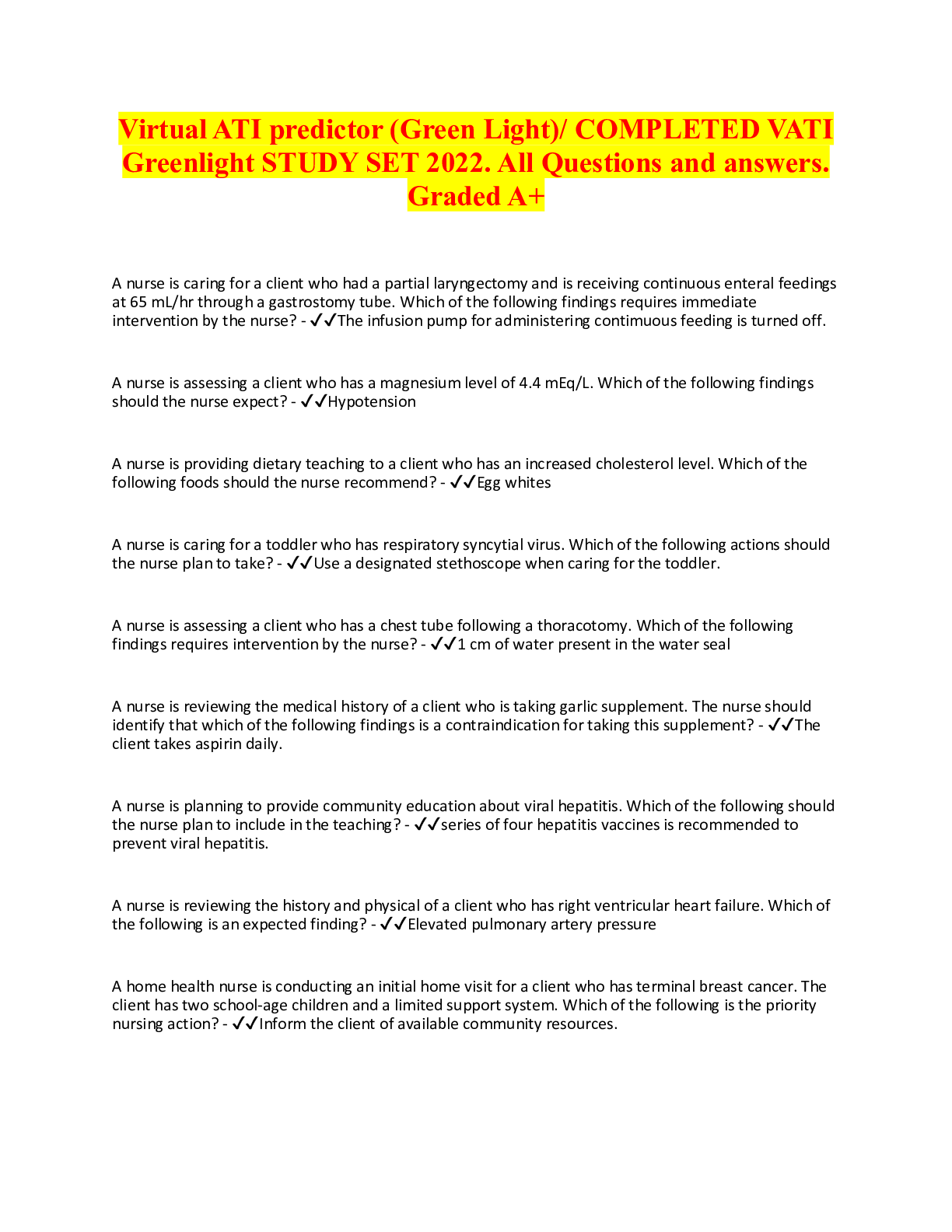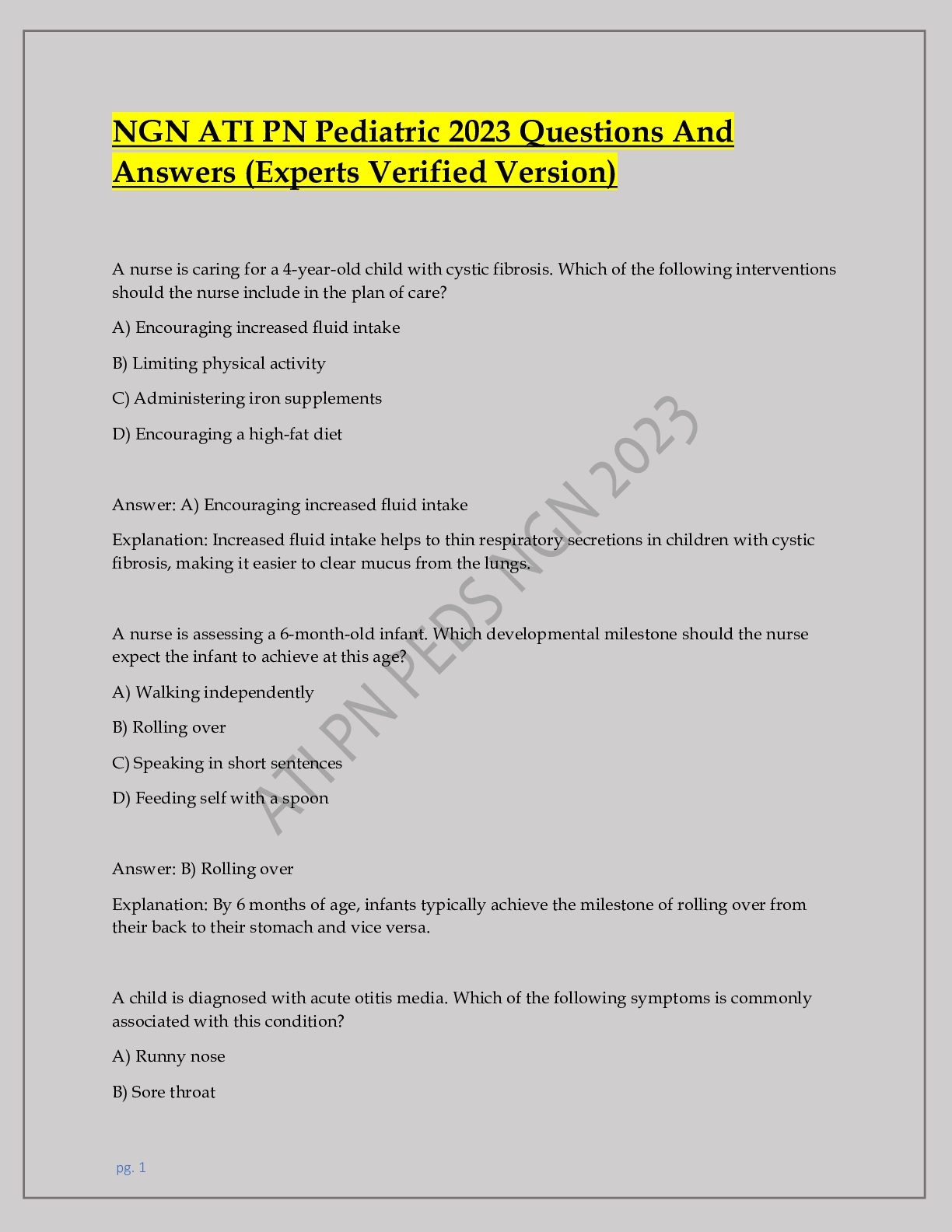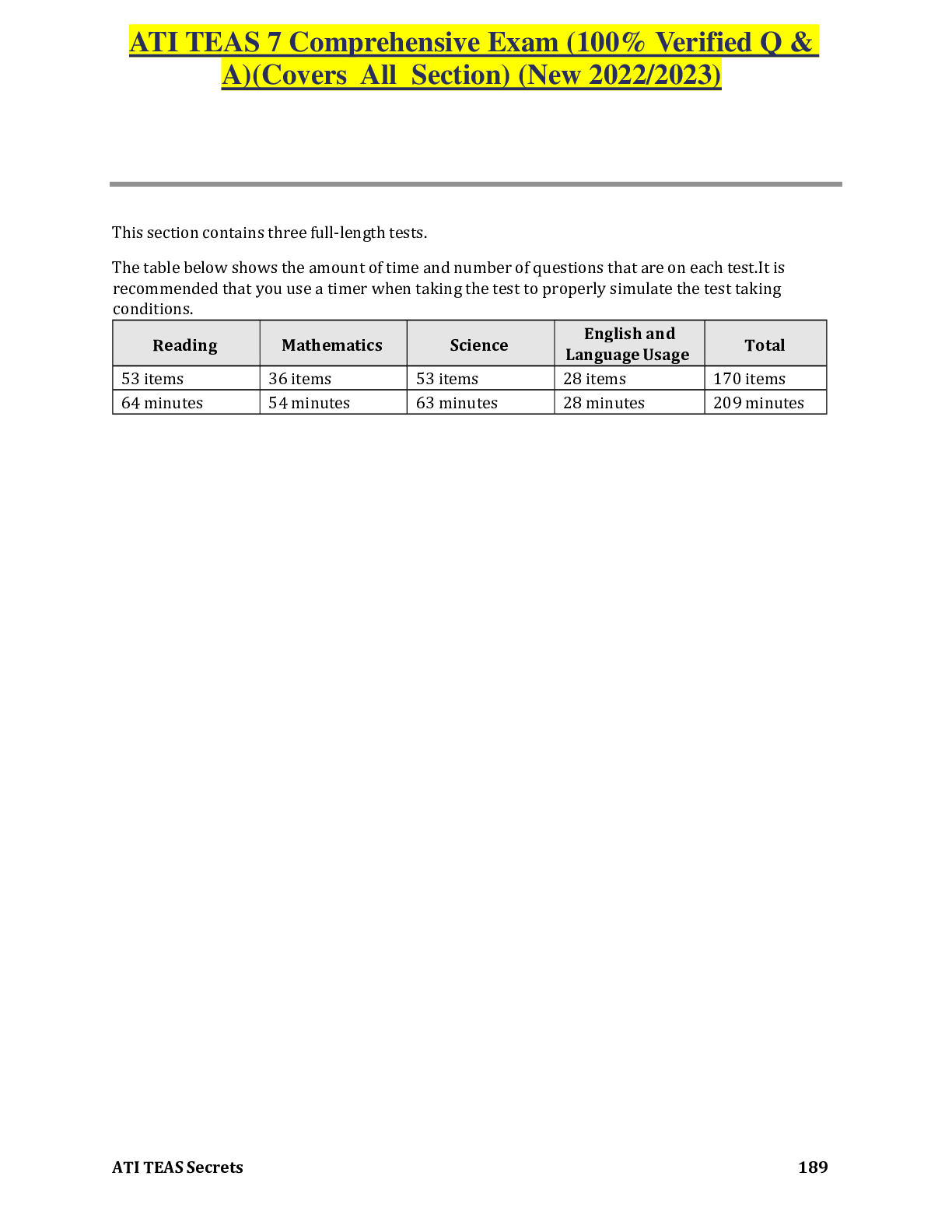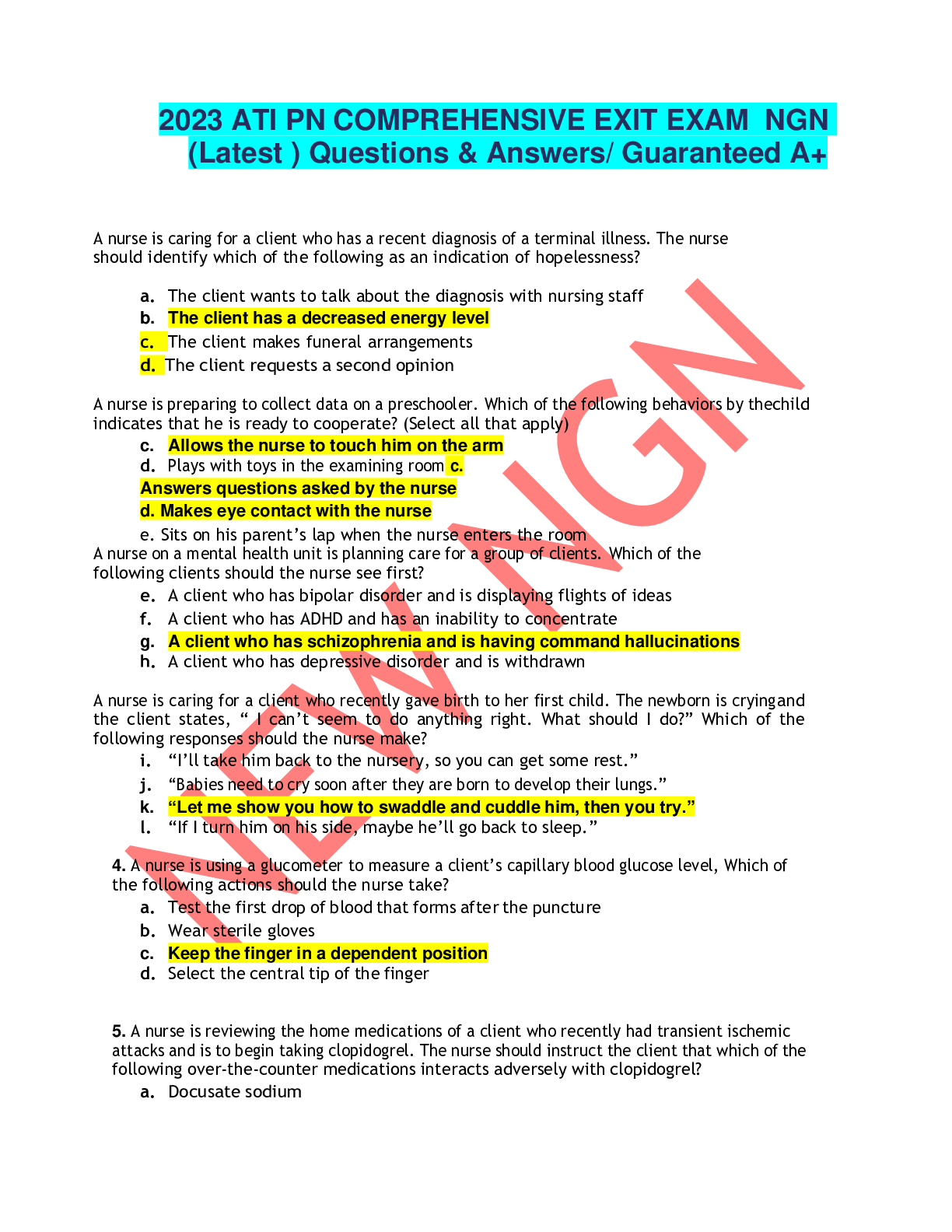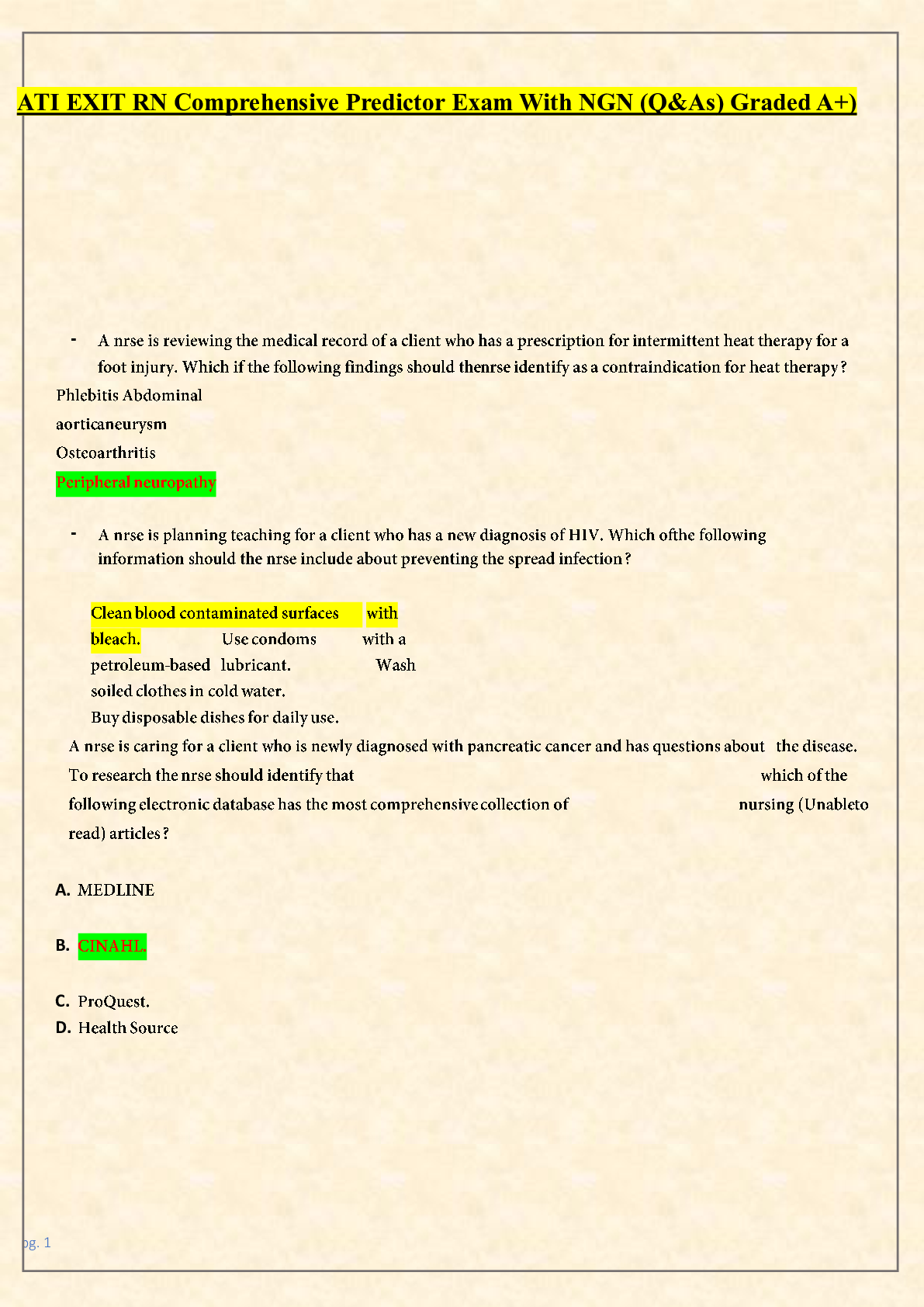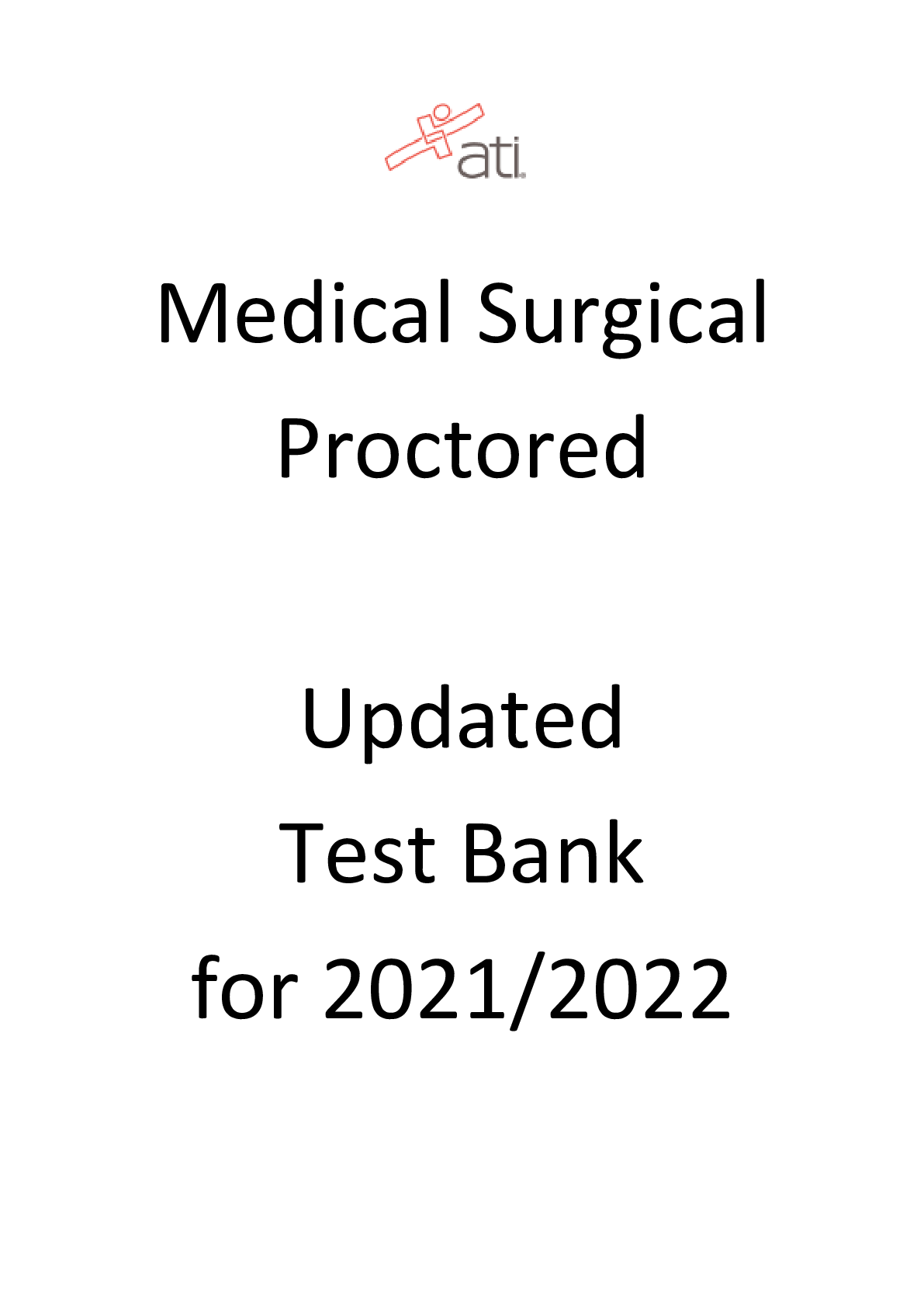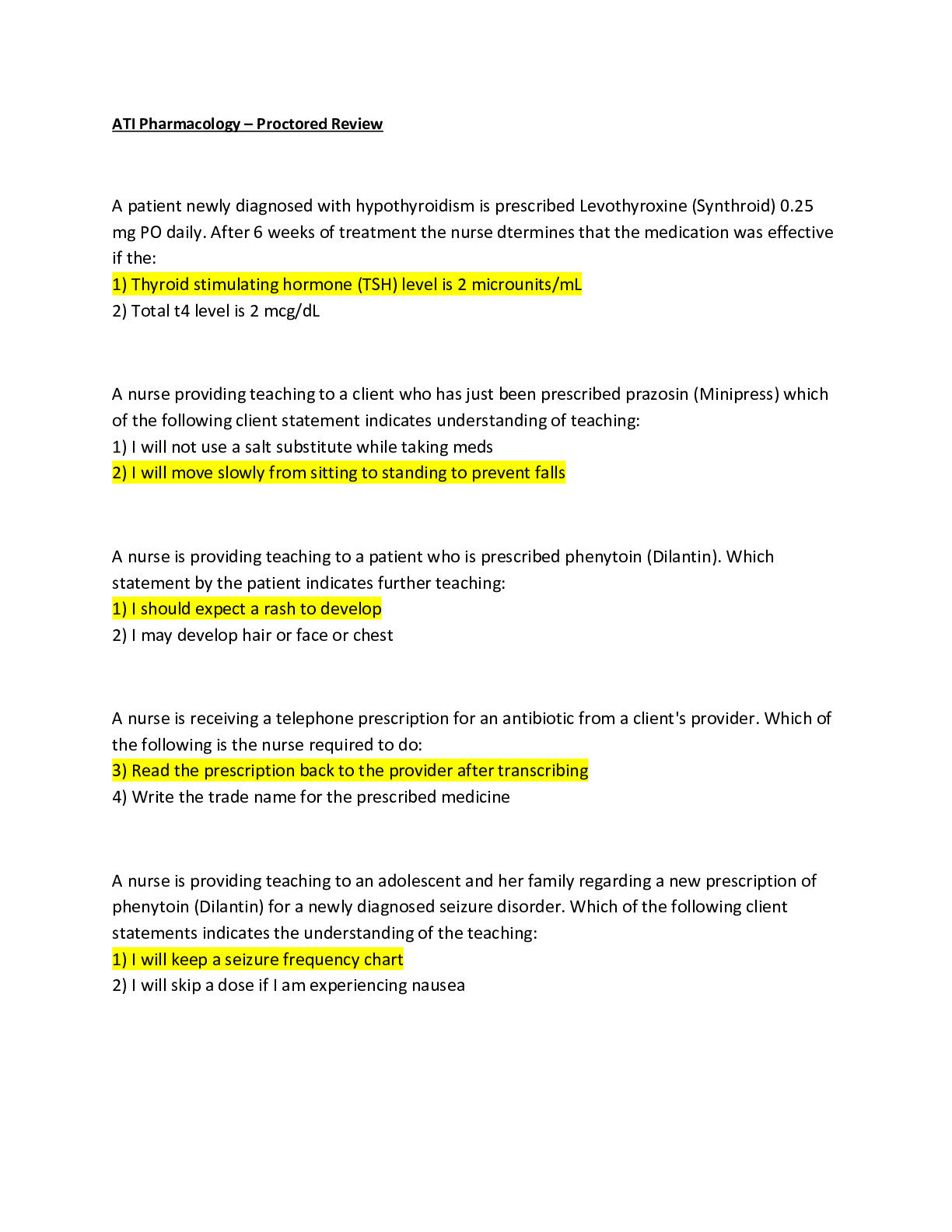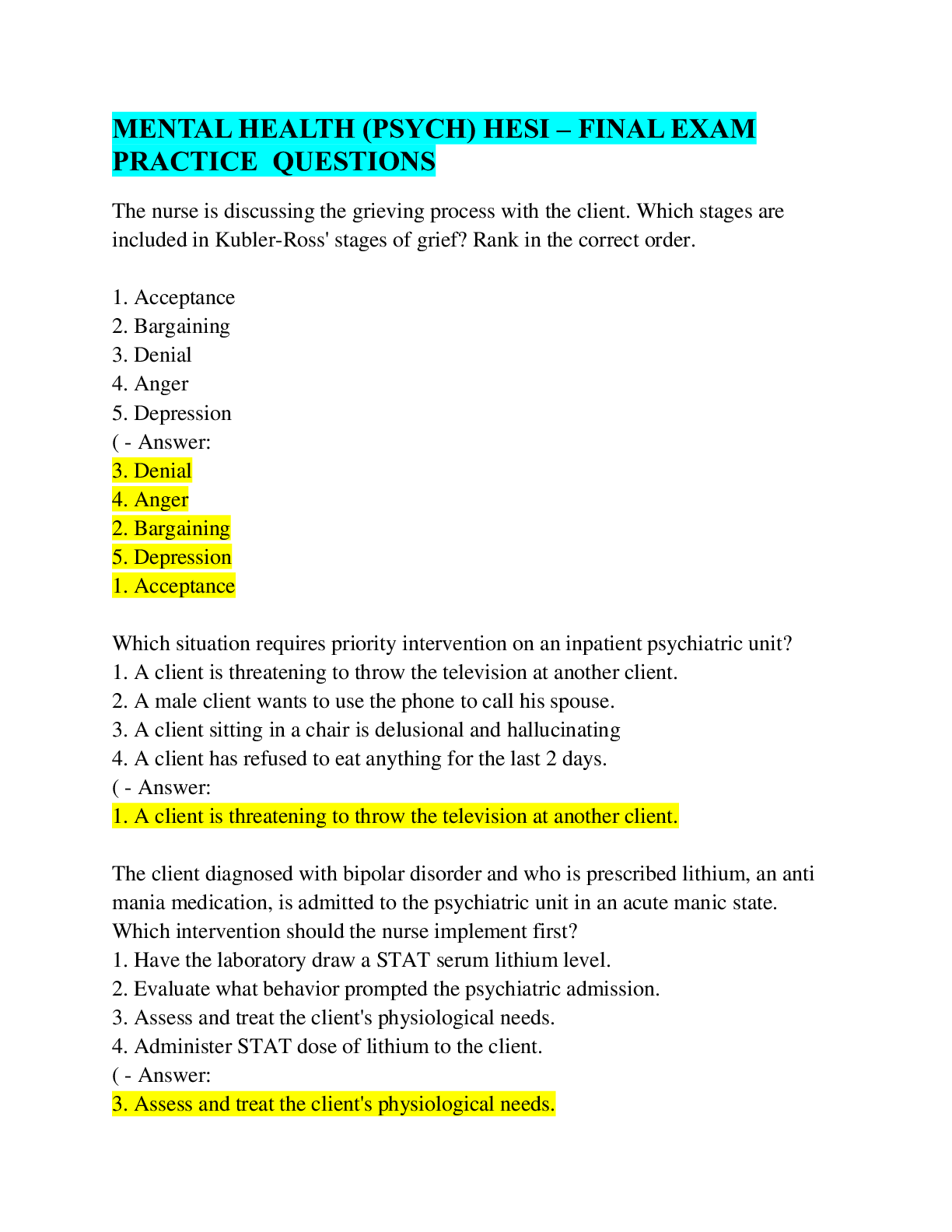Pathophysiology Final Rasmussen College. Questions and answers. Graded A+
Document Content and Description Below
Pathophysiology Final Rasmussen College. Questions and answers. Graded A+ Homeostasis - Ans-o A state in which all systems are in balance. State of equilibrium. Maintaining internal conditions sta... ble. Allostasis: - Ans-o Ability to successfully adapt to challenges. Intricate regulatory processes orchestrated by the brain. Epidemiology: - Ans-Study of diseases within a population. Epidemiology is the method used to find the causes of health outcomes and diseases in populations. Review the different levels of disease prevention such as primary, secondary, and tertiary as well as examples for each. - Ans-o primary: Altering susceptibility or reducing exposure for susceptible person (Example: Immunization) o secondary: Early detection screening, and management of disease. (Example: cancer screening, performing months breast examinations) o tertiary: Rehabilitation, supportive care, reducing disability, and restoring effective functioning. (Example: PT/OT following stroke) Review the differences between the sympathetic vs the parasympathetic nervous systems. - Ans-o Sympathetic: Fight or Flight response o Parasympathetic: Rest and digest What happens to the body during "fight-or-flight" response? - Ans-o Body focuses on specific organs and tissue to survive until body alleviates itself from stressor § Dilate pupils§ Inhibit salivation § Increase heartbeat § Relax airway § Inhibit activity of stomach § Stimulate relapse of glucose; inhibit gallbladder § vii.Inhibit activity of intestine § viii.Secrete epi and norepinephrine § Relax bladder § Promote ejaculation and vaginal contraction What is a hypersensitivity? Review the four different types of hypersensitivities: - Ans-Antigenic response beyond what is considered normal Response to antigens (allergens) leading to damage: Type I :Anaphylaxtic Type II: Cytotoxic Type III: Immune complex hypersensitivity Type Iv: Delayed cell mediated Review the difference between active and passive immunity, know examples for each type. - Ans-o Active immunity: When the body creates antibodies when coming into contact with a virus. Ex: Vaccination o Passive immunity: Passing on antigens. Ex: Breast feeding Review the difference between active and passive immunity, know examples for each type. - AnsvActive - when the body creates a antibodies once coming into contact with specific virus Passive - when passed from mother to child through breast milk or blood stream Review the various factors that can contribute to edema. - Ans-o Increases in capillary hydrostatic pressure (blood vessel blockage, incompetent venous valves o Increased capillary permeability (inflammation) o Congestive heart failure o High blood volume or HTNo Decrease in plasma proteins (such as albumin) o Blockage of lymphatic drainage (due to cancer or removal of lymph tissue) Review the differences between benign and malignant tumors. - Ans--Benign More closely resembles original tissue type Grows more slowly Little vascularity Rarely necrotic Does not invade adjacent tissue or spread to distant sites Malignant -Malignant cells ignore growth controlling signals -Proliferate despite lack of growth-initiating signals from the environment -Escape signals to die and achieve a kind of immortality -Display a lack of differentiated features(anaplasia) and contribute poorly or not at all to the function of their tissue Metastasis - process by which cancer cells escape their tissue of origin and initiate new colonies of cancer in distant sites Review the differences between benign and malignant tumors. - Ans-Benign: Localized, generally curable -More closely resembles original tissue type -Grows more slowly -Little vascularity -Rarely necrotic -Often retains original function -Noninvasive, does not invade adjacent tissue Malignant: Ex: Anastasia, and metastasis -Malignant cells ignore growth controlling signals -Proliferate despite lack of growth-initiating signals from the environment -Escape signals to die and achieve a kind of immortality-Display a lack of differentiated features(anaplasia) and contribute poorly or not at all to the function of their tissue Review signs and symptoms of peptic ulcer disease. - Ans-Caused by Stress, smoking, genetics. No relation between diet and PUD. Caused by NSAIDS, stress (gluccocorticoids) smoking Bacterial infection: H. Pylori key role in promoting both gastric and duodenal ulcer formation, thrives in acidic conditions, slow rate of ulcer healing, high rate of recurrence, clearance of Hy. Pyloric promotes ulcer healing Clinical Manifestations: Epigastric burning pain- occurs on an empty stomach. Pain of duodenal ulcer classically occurs to 2-3 hours after. Meal. Treatment: Reduce acidity to heal the injured mucosa, antibiotics, proton pumps inhibitors, sucralfate. Review signs and symptoms of appendicitis. How do we assess for this condition? - Ans-Inflammation of vermiform appendix. Obstruction by fecalith. Rebound tenderness.Systemic signs of inflammation Check blood work, "mcburnies point" Review signs and symptoms of liver disease. Review complications of liver disease such as ascites, hepatic encephalopathy and esophageal varices. How are esophageal varices managed/treated? - AnsSigns and symptoms of Liver disease o Jaundice of the eyes - Staining issues by bilirubin - Results from impaired bilirubin metabolism o Bloody stool What role does albumin play in the blood? What happens to albumin production with liver failure? - Ans-Helps keep fluid in blood vessels and helps transport materials like vitamins, enzymes, and hormones. Liver failure decreases albumin productionWhat are the function of the kidneys? How do we assess for renal disorders? - Ans-Function of kidneys o Regulate water and electrolyte levels o Produces erythropoietin Assessment: o CVA tenderness o Urine test 1. Dipstick and microscopic urinalysis o Ultra sound What is cystic kidney disease? What causes this condition? - Ans-a. Cystic kidney disease - Genetically transmitted renal disorder, resulting in fluid filled; may be localized to one area or affect both kidneys b. Causes - autosomal recessive forms, autosomal dominant types (most common, symptoms appears later in life) [Show More]
Last updated: 1 year ago
Preview 1 out of 17 pages
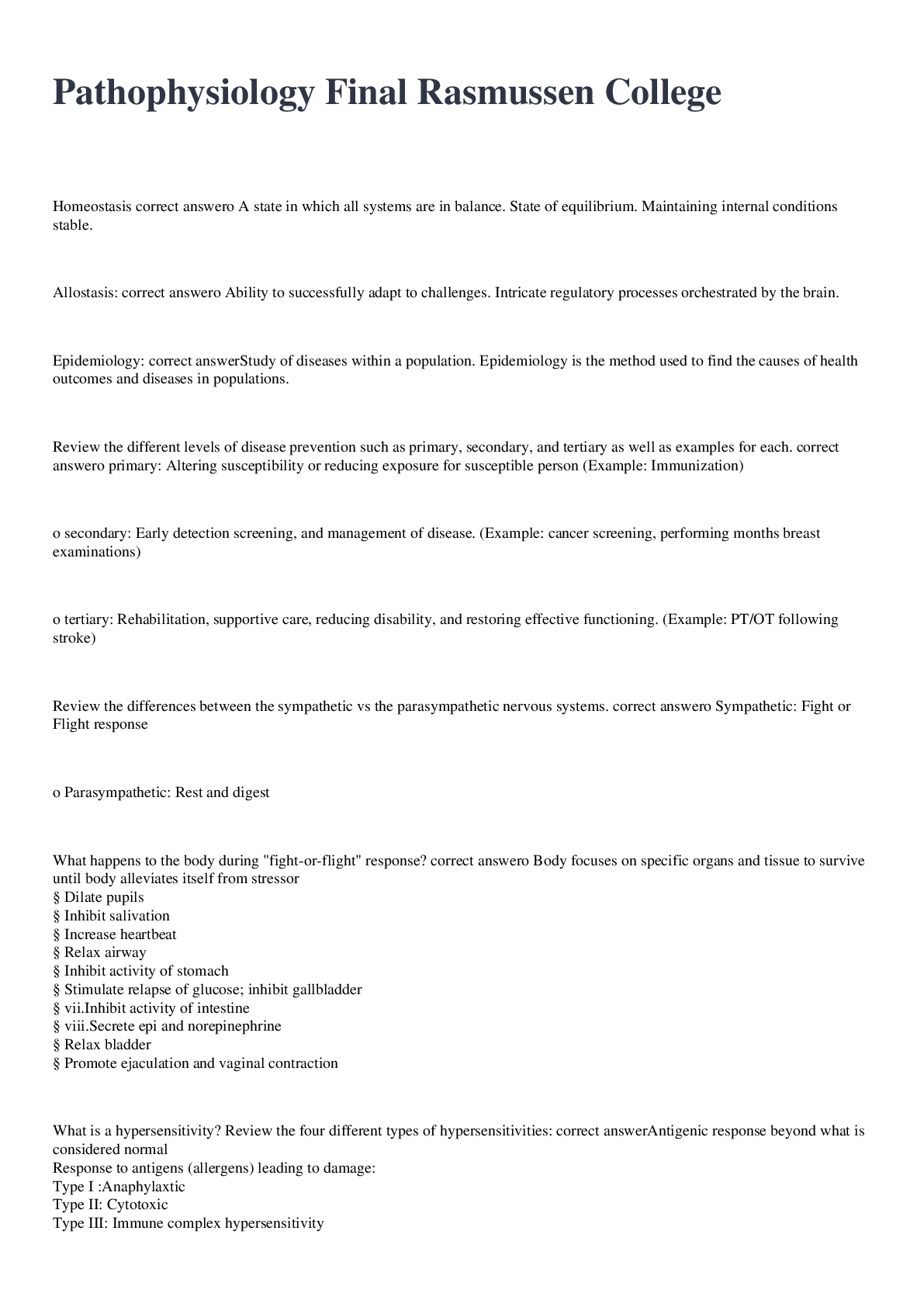
Reviews( 0 )
Document information
Connected school, study & course
About the document
Uploaded On
Jun 29, 2022
Number of pages
17
Written in
Additional information
This document has been written for:
Uploaded
Jun 29, 2022
Downloads
0
Views
75

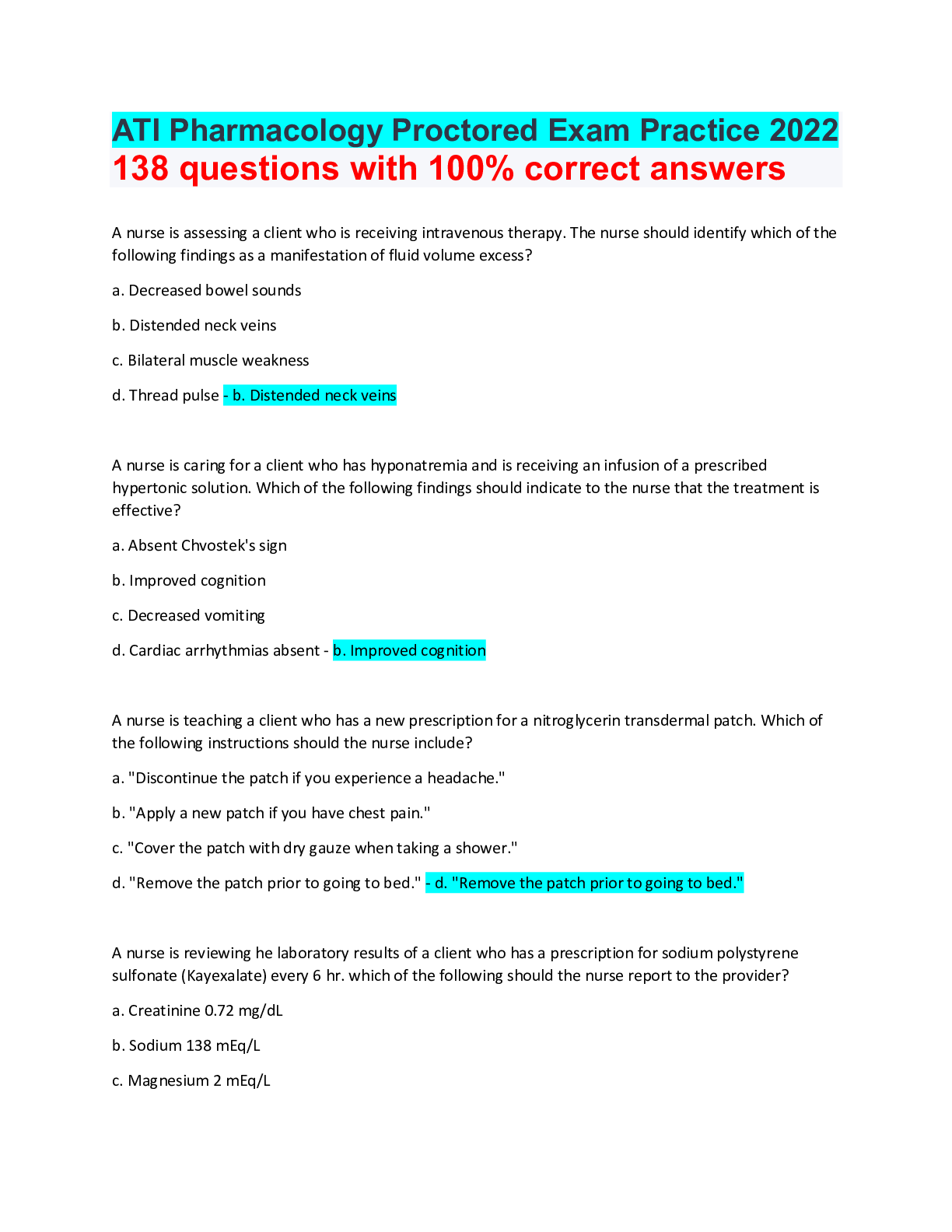
_Already Graded A.png)
